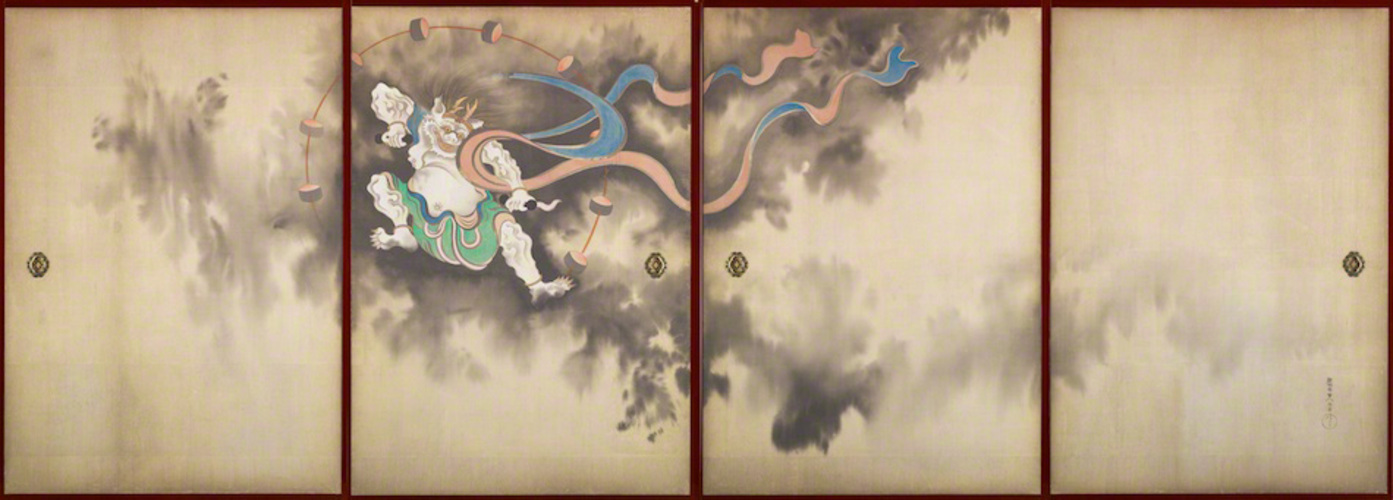The Art of Rin School
Exhibition period Saturday, October 10 - Sunday, November 29, 1992
Machida City Museum of Graphic Arts (Tokyo, Japan)
URL: http://hanga-museum.jp
Masterpieces of European Oil Painting: The Paintings in 20th Century from the Renaissance to Impressionism
Exhibition period Friday, October 16 - Thursday, November 5, 1992
China Art Gallery (Beijing, China)
Giovanni Bellini Portrait of a Procurator
c. 1507
Oil on panel
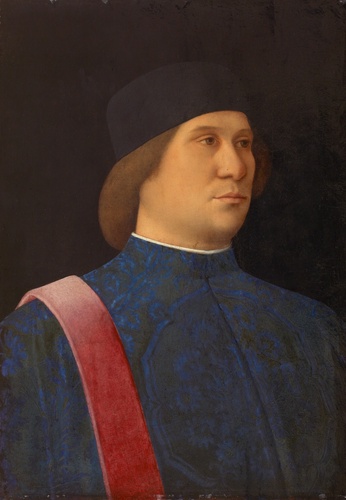
Bachiacca (Francesco Ubertini) Ideal Portrait of a Lady
16th c.
Oil on panel
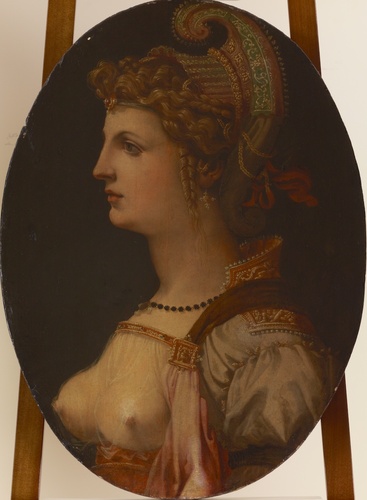
Paolo Veronese (Paolo Caliari) and his workshop A Boy and a Page
1570s
Oil on canvas transferred from panel
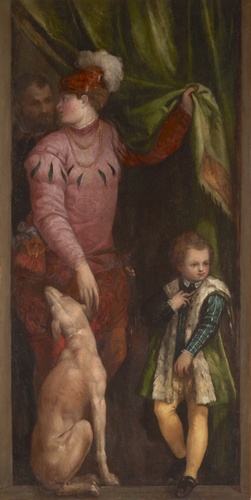
Lucas Cranach the Elder Portrait of John Frederic the Magnanimous, Elector and Duke of Saxony
1533
Tempera and oil on canvas transferred from panel
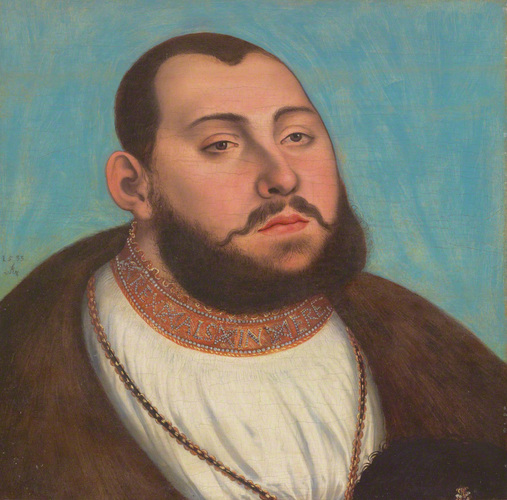
Bernardo Strozzi Alexander the Great Restoring the Throne Usurped from Abdolomino
c. 1615-17
Oil on canvas
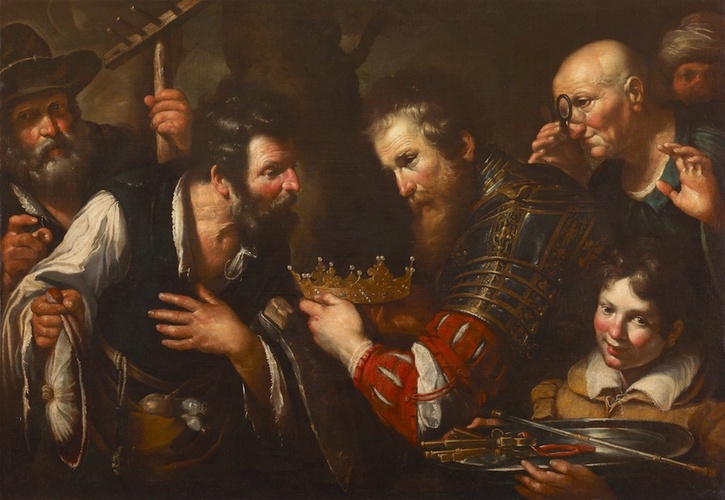
Ambroise Dubois Flora
Late 16th c.
Oil on canvas
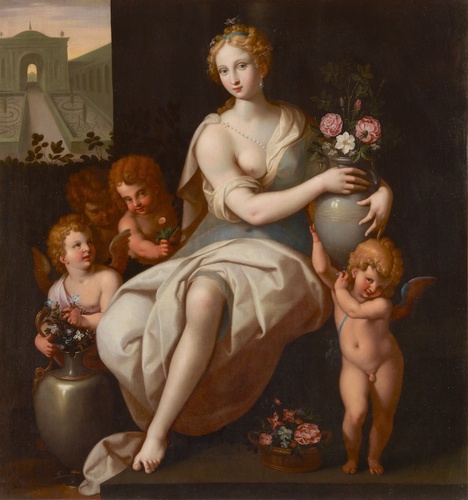
Claude Lorrain (Claude Gellée) Wooded Landscape with a Brook
1630
Oil on canvas
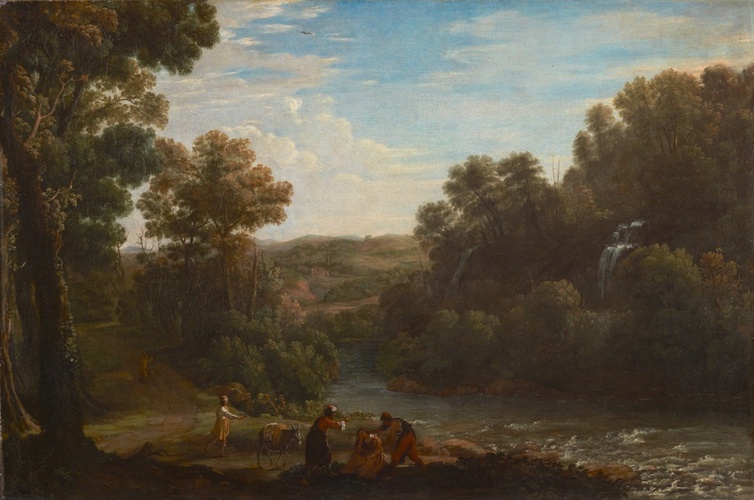
Pieter Brueghel the Younger Peasant Wedding Feast
1630
Oil on panel
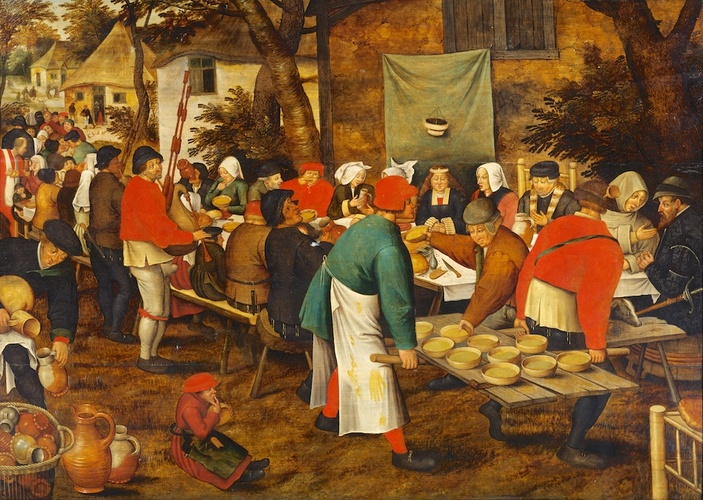
Peter Paul Rubens Constantine’s Marriage
1622
Oil on panel
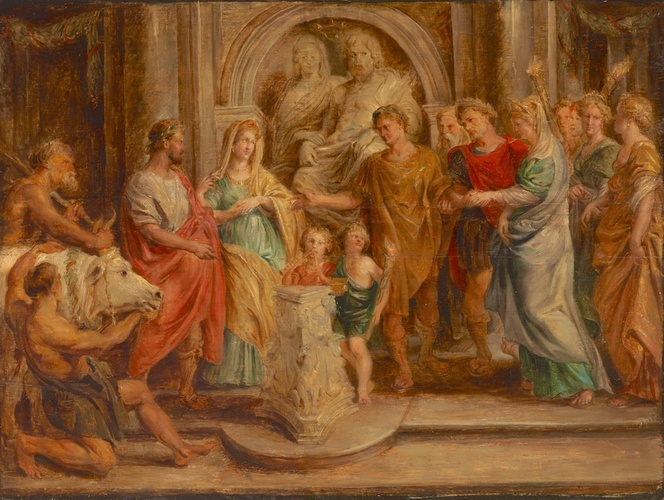
Anthony van Dyck Portrait of Amalia von Solms-Braunfels
1629
Oil on canvas
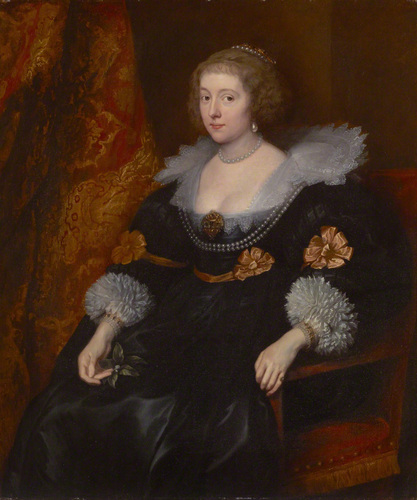
Anthony van Dyck Portrait of Anne Carr, Countess of Bedford
1639
Oil on canvas
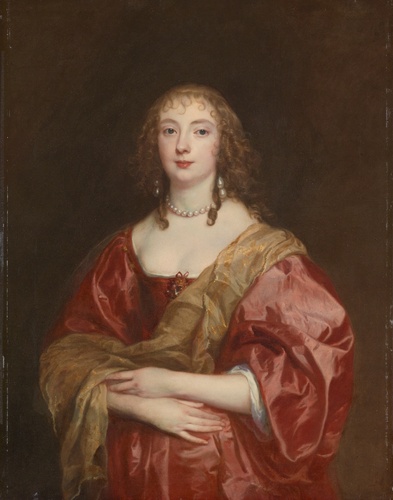
Frans Wouters Antonius and Cleopatra
17th c.
Oil on panel
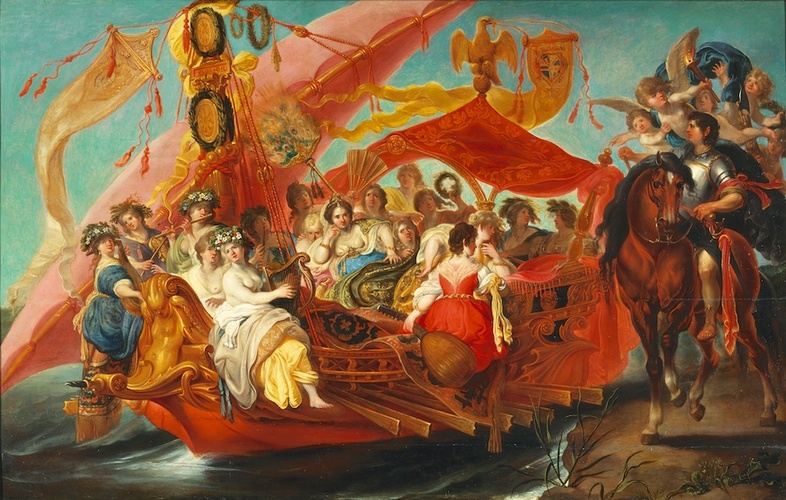
Frans Hals Portrait of a Man
1633
Oil on canvas
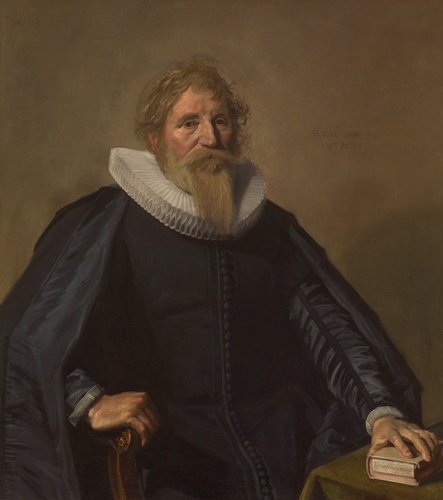
Salomon van Ruysdael The Halt Before the Inn
1645
Oil on canvas
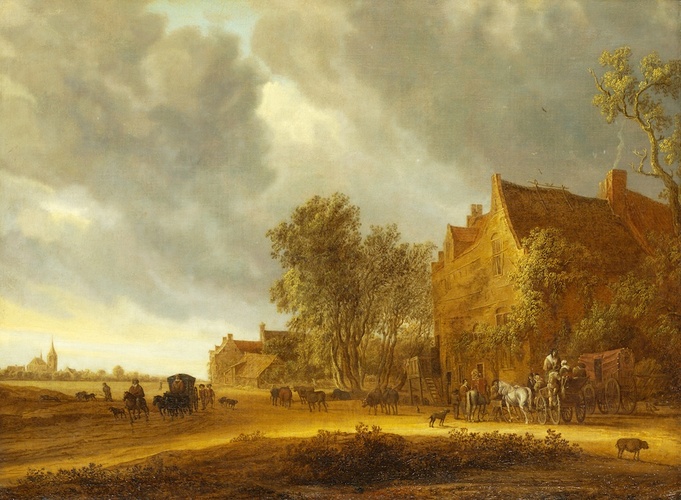
Cornelis de Heem Still Life Painting with Fruits
1665-70
Oil on canvas
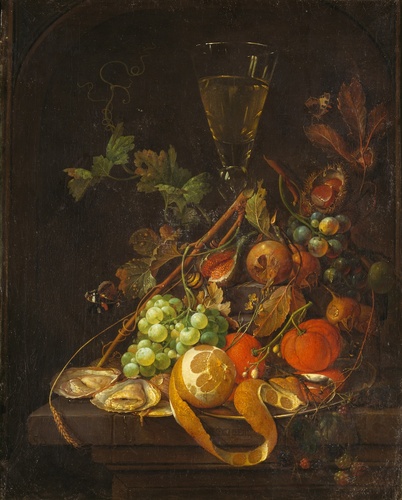
Govaert Flinck A Little Girl with a Puppy in Her Arms
Late 1630s
Oil on canvas laid down on panel
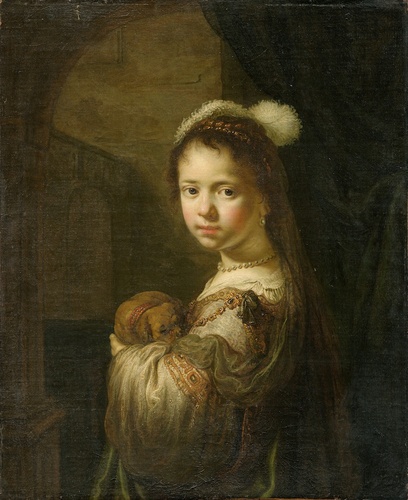
Aert de Gelder Nathan Admonishes King David
1683
Oil on canvas
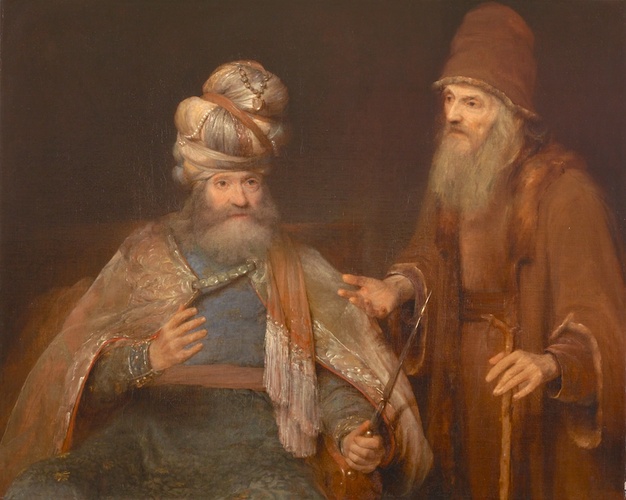
Georges de La Tour Smoker
1646
Oil on canvas
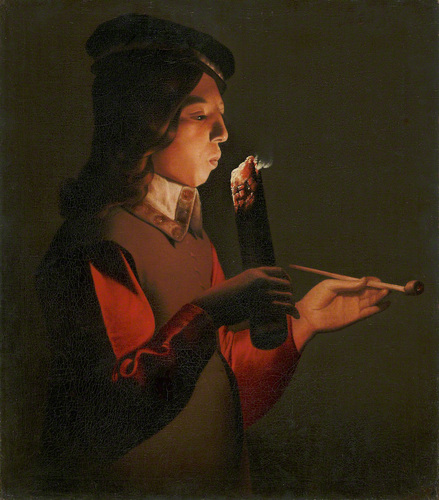
Nicolas Mignard Rinaldo and Armida
Mid 1650s
Oil on canvas
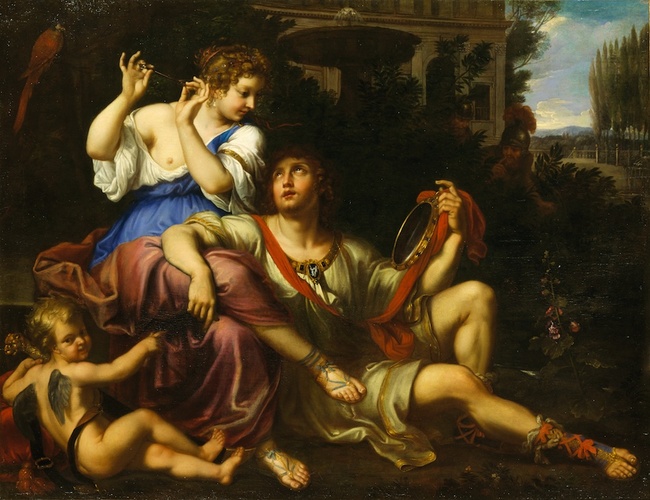
Jean-Baptiste Monnoyer Flowers
17th c.
Oil on canvas
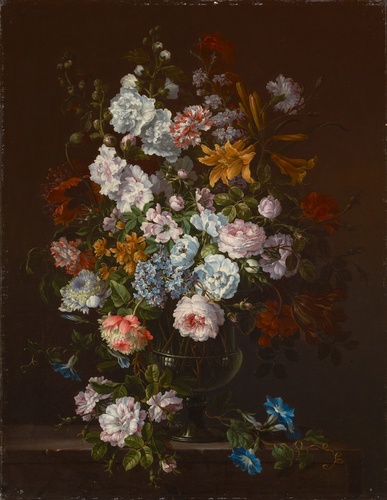
Hyacinthe Rigaud Portrait of the Marquis Jean-Octave de Villars
c. 1715
Oil on canvas
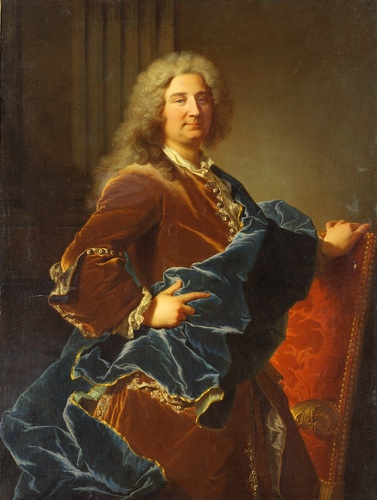
Canaletto (Giovanni Antonio Canal) Piazza San Marco, Venice
c. 1732-33
Oil on canvas
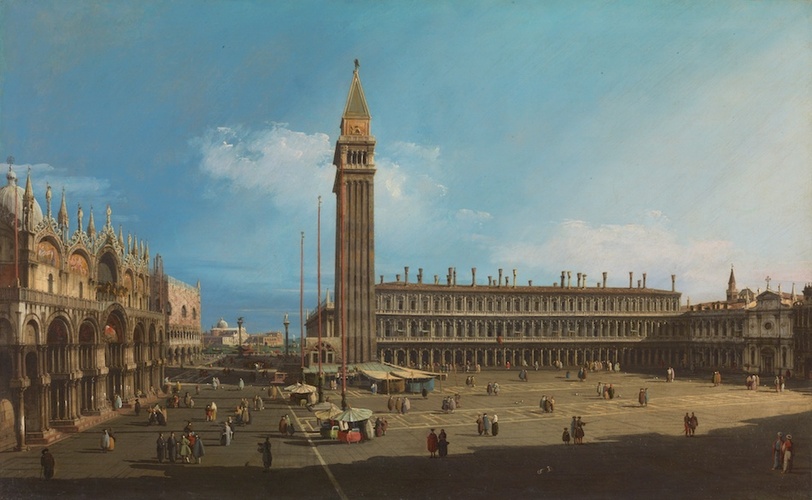
Jean-Antoine Watteau Portrait of Antoine de la Roque
c. 1718
Oil on canvas
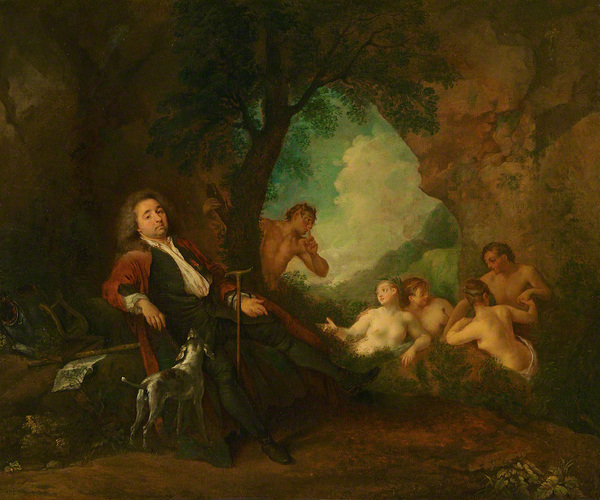
Jean-Marc Nattier Portrait of the Marquise de la Ferté-Imbault
1740
Oil on canvas
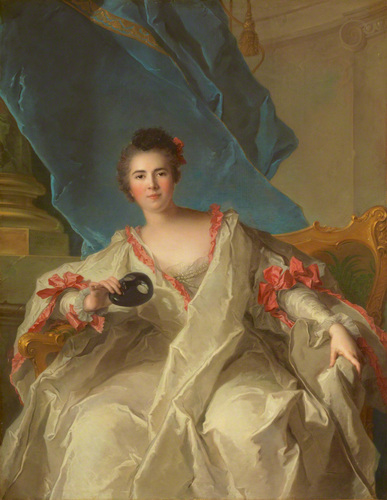
François Boucher The Triumph of Venus
c. 1745
Oil on canvas
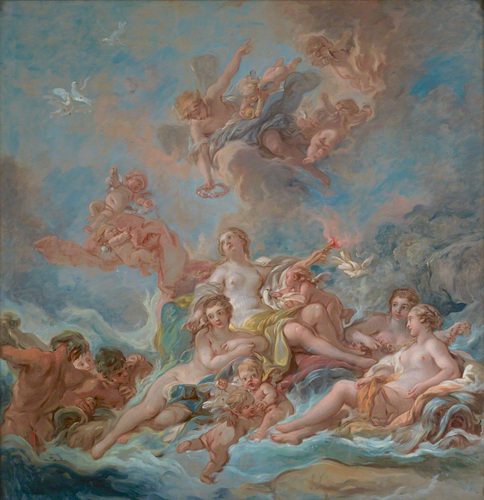
Jean-Siméon Chardin The Drawing Lesson
c. 1748-53
Oil on canvas
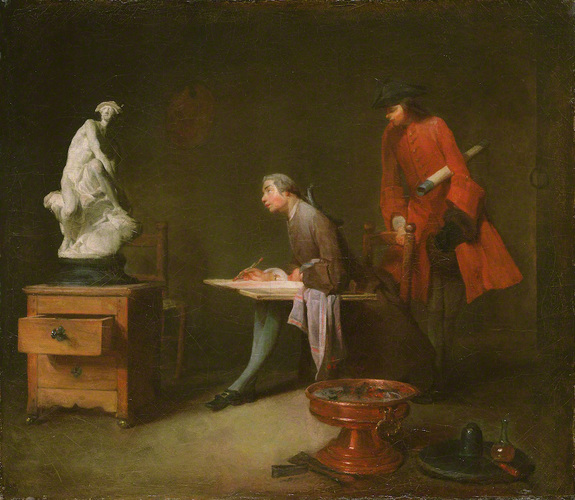
Jean-Honoré Fragonard Happy Fecundity
1773-76
Oil on canvas
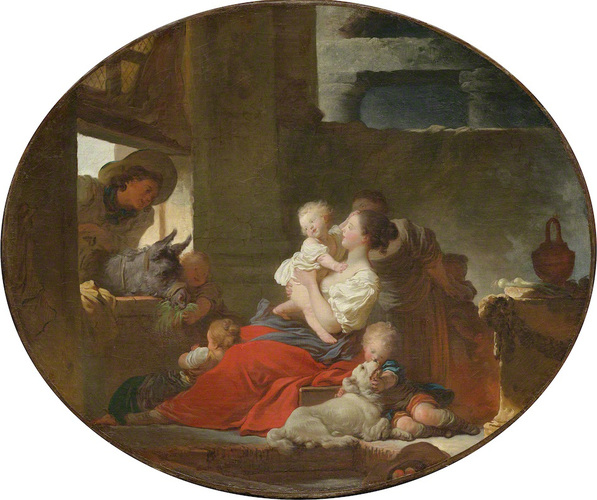
Louis Rolland Trinquesse After the Soirée
1774
Oil on canvas
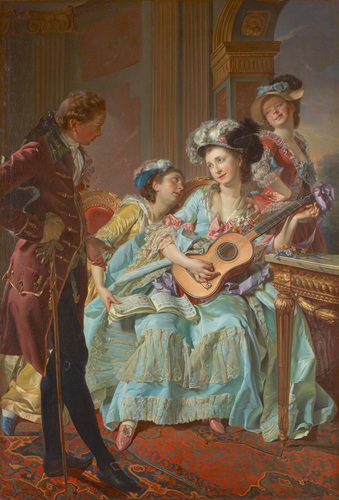
Elisabeth-Louise Vigée-Le Brun Princess Youssoupoff
1797
Oil on canvas
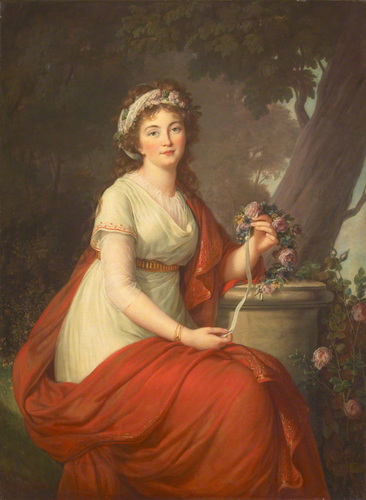
Cornelis van Spaendonck Still Life with Flowers and Fruits
1804
Oil on canvas
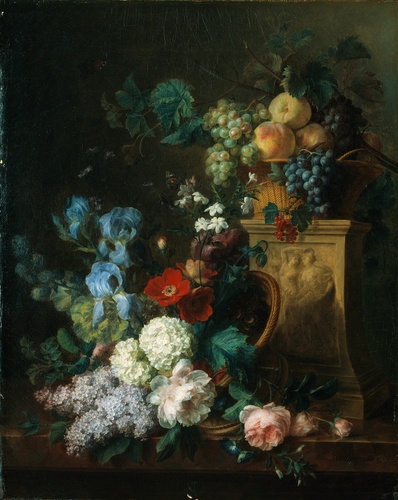
Thomas Gainsborough Figures Before a Cottage
1772-73
Oil on canvas
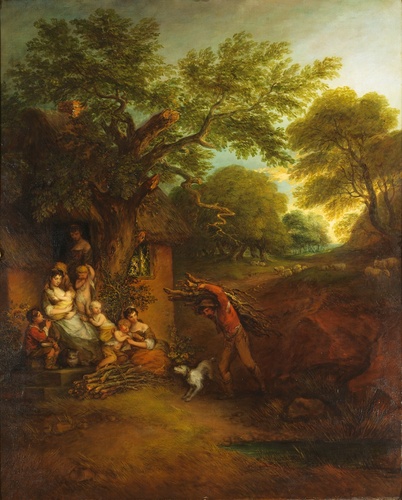
Joshua Reynolds A Young Girl and Her Dog
c. 1780
Oil on canvas
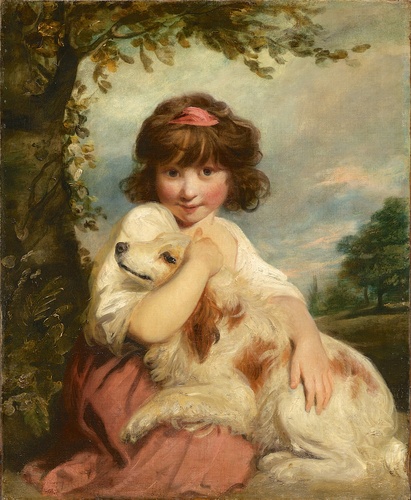
Joseph Mallord William Turner Helvoetsluys; the City of Utrecht, 64, Going to Sea
1832
Oil on canvas
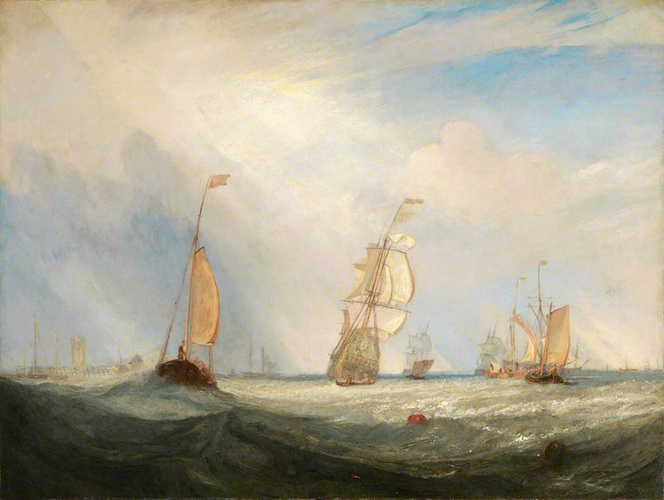
Thomas Lawrence The Prince Regent, Later George IV
1811-20
Oil on canvas
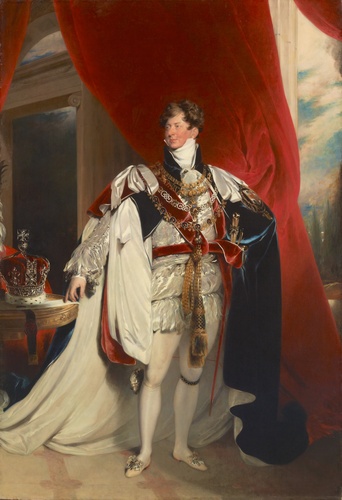
Francisco de Goya y Lucientes Portrait of Don Sebastien Marie Gabriel de Bourbon-Bragance
c. 1815-20
Oil on canvas
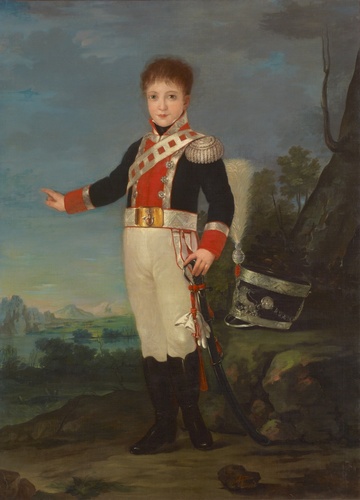
Guillaume Guillon Lethière La Fayette Introducing Louis-Philippe to the People of Paris
c.1831
Oil on canvas
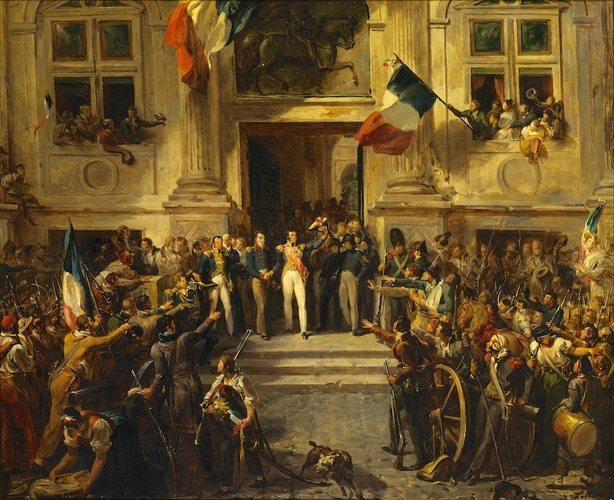
Workshop of François Gérard Portrait of Napoléon I
Early 19th c.
Oil on canvas
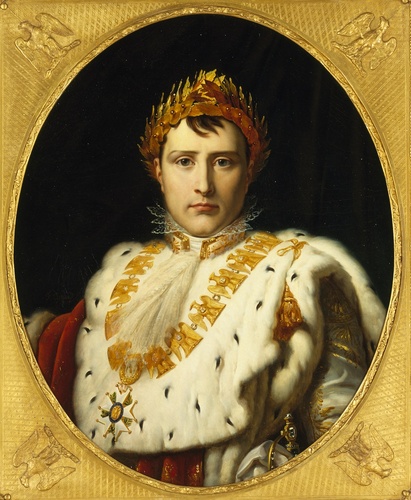
Jacques-François Swebach The Battle of Mont Thabor
1812
Oil on canvas
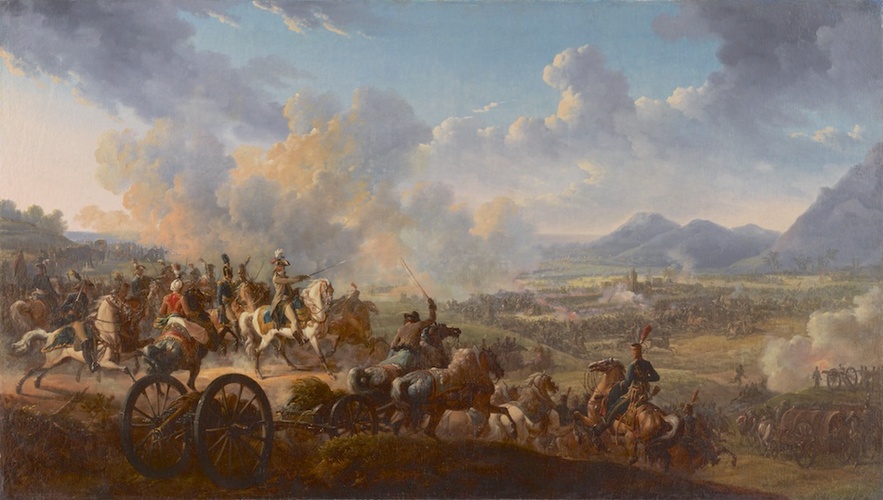
Jean-Auguste-Dominique Ingres Jupiter and Thetis
c. 1807-25
Oil on canvas
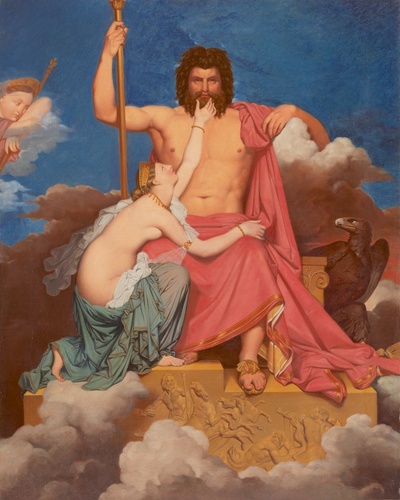
Théodore Géricault General of the First Empire Attacking the Enemy
c. 1810
Oil on canvas
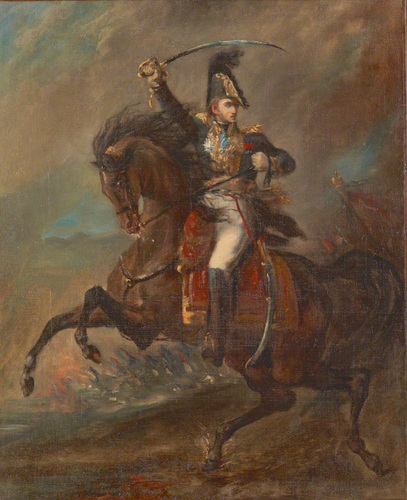
Eugène Delacroix Circassian Holding a Horse by Its Bridle
c. 1858
Oil on canvas
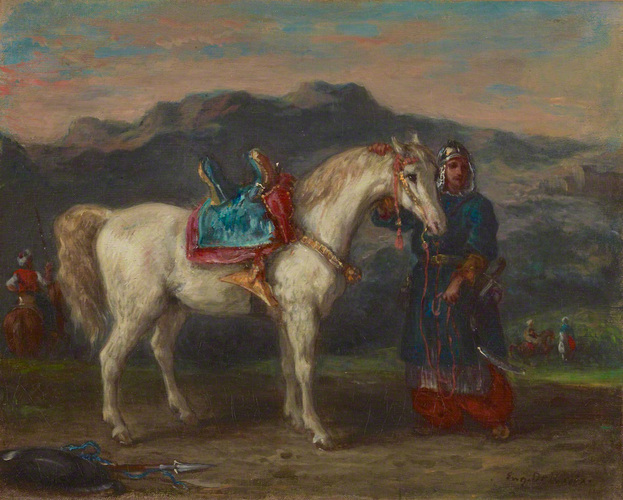
Jean-Baptiste Camille Corot Judith
c. 1872-74
Oil on canvas
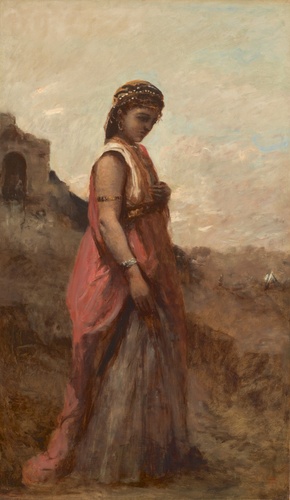
Jean-François Millet The Goosegirl
1866-67
Oil on canvas
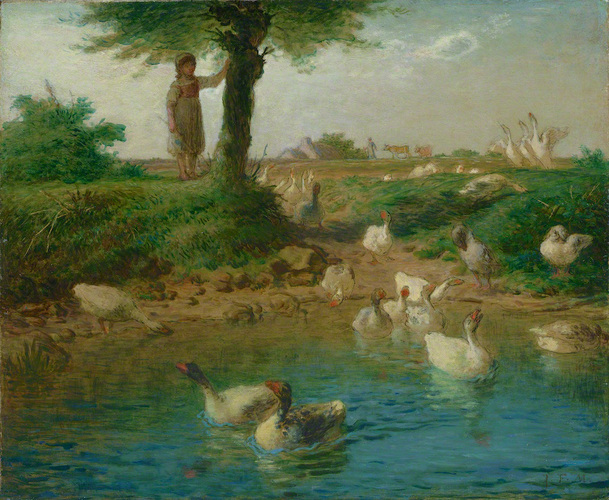
Constant Troyon Herd of Cattle
1850-60s
Oil on canvas
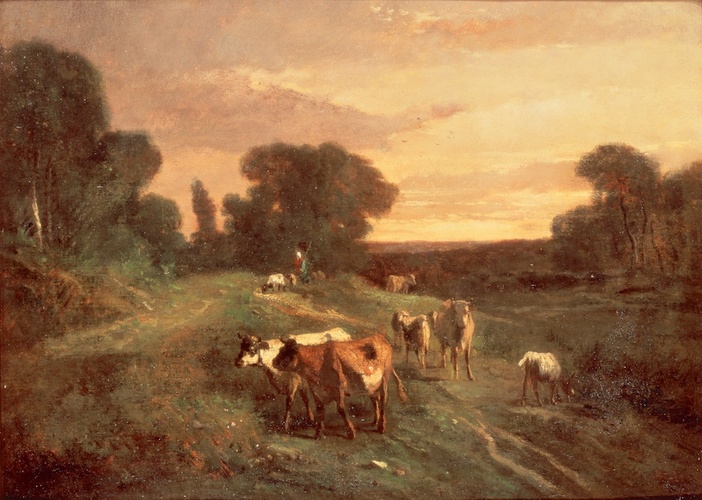
William Adolphe Bouguereau Daughter of Fisherman
1872
Oil on canvas
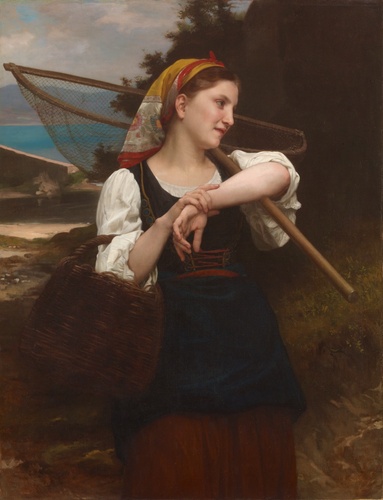
Gustave Courbet Squall on the Horizon
1872-73
Oil on canvas
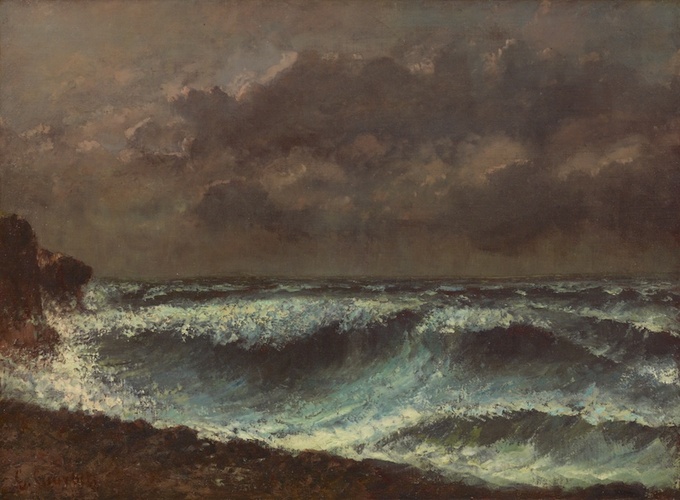
Paul Cézanne Detour in Auvers
c. 1873
Oil on canvas
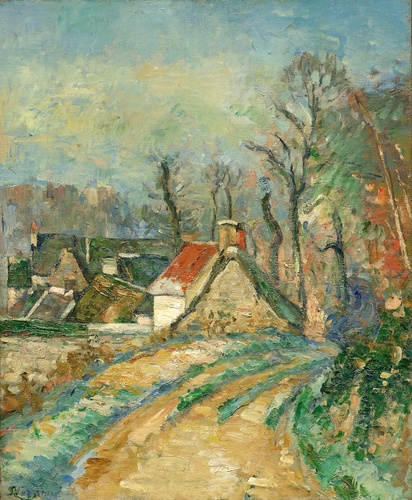
Alfred Sisley Cows in Pasture, Louveciennes
1874
Oil on canvas
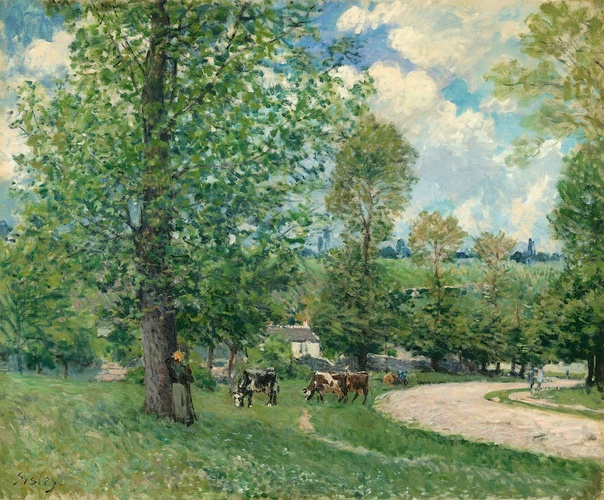
Jules James Rougeron Toilette
1877
Oil on canvas
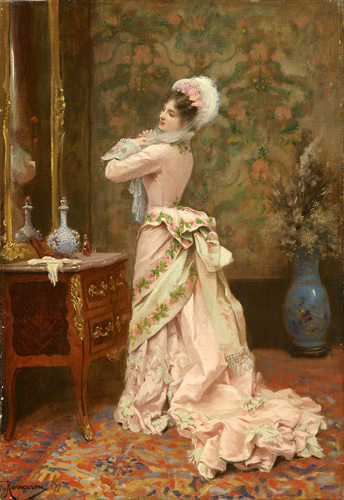
Eugène Boudin The Grand Canal, Venice
1895
Oil on canvas
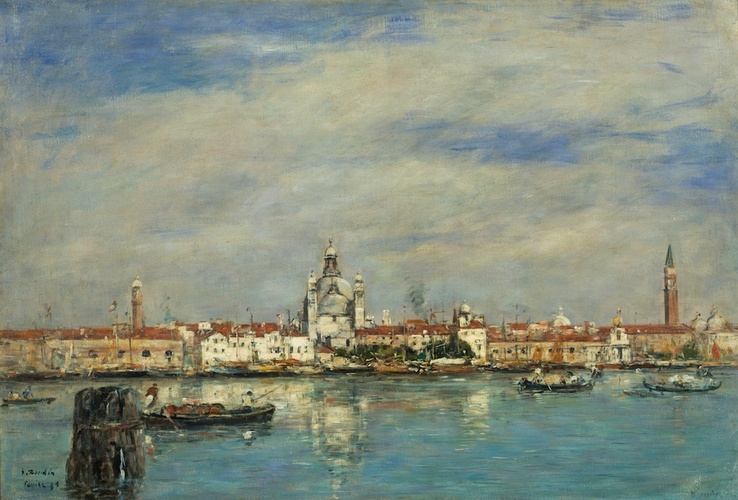
Édouard Manet The Promenade (Madame Gamby)
c. 1880-81
Oil on canvas
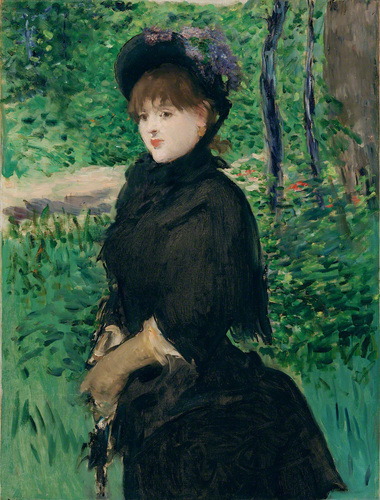
Gustave Caillebotte Cottage in Trouville
1882
Oil on canvas
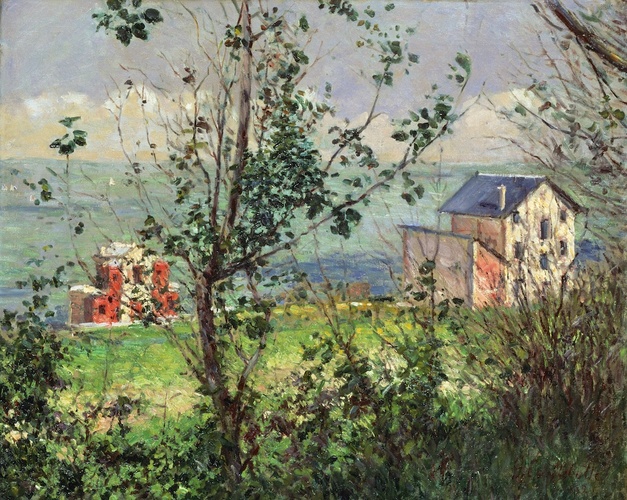
Berthe Morisot Girl in Rose Dress
1888
Pastel on canvas
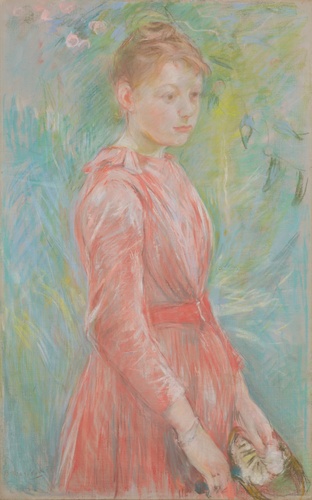
Henri Le Sidaner A Break in the Woods, Gerberoy
1925
Oil on canvas
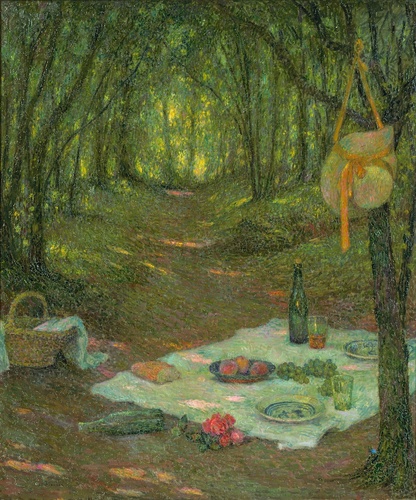
Pierre-Auguste Renoir Young Woman in Red Dress
c. 1892
Oil on canvas
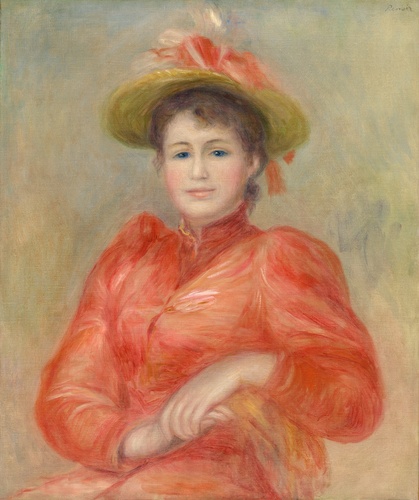
Pierre-Auguste Renoir Woman After Bath
1896
Oil on canvas
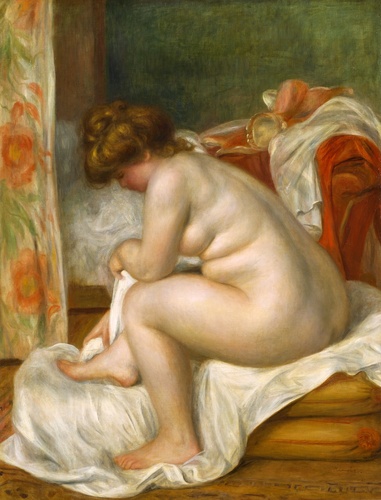
Camille Pissarro Hyde Park, London
1890
Détrempe on paper laid down on canvas
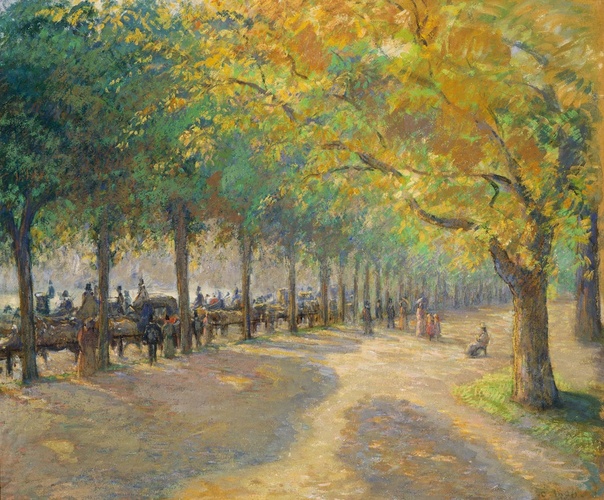
Camille Pissarro Autumn, Morning, Cloudy, Eragny
1900
Oil on canvas
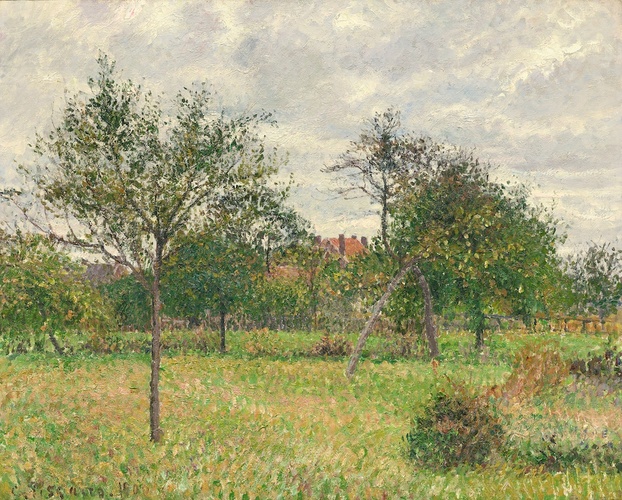
Edgar Degas Dancers
c. 1900
Pastel on paper
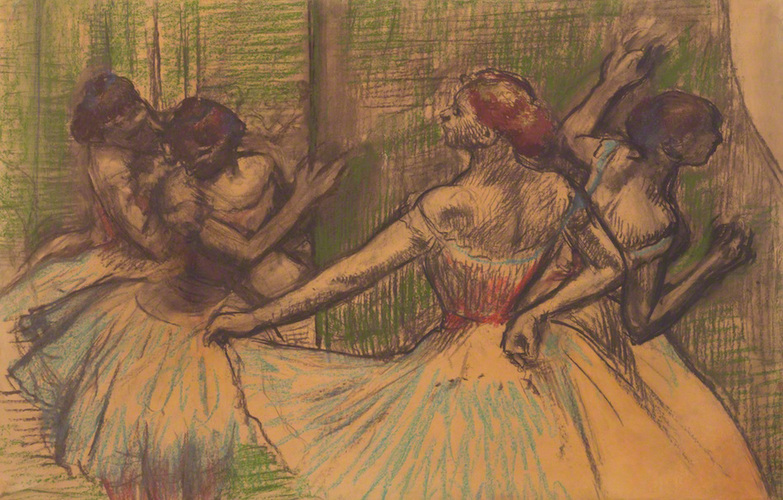
Henri Martin Garden of the Painter’s House
1902
Oil on canvas
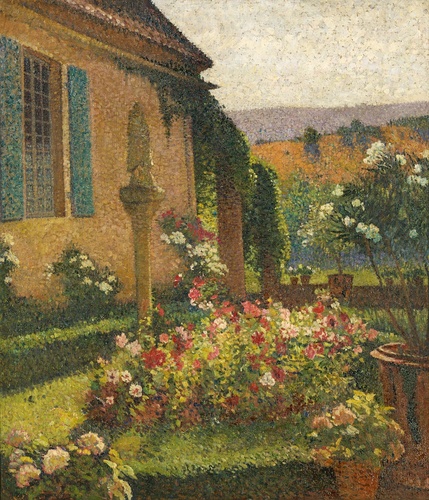
Édouard Vuillard Woman and Children
1904
Oil on paper mounted on panel
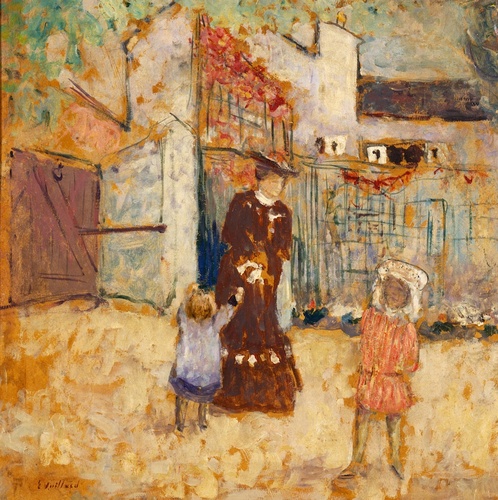
Mary Cassatt Countess Morel d’Arleux and Her Son
c. 1906
Pastel on canvas
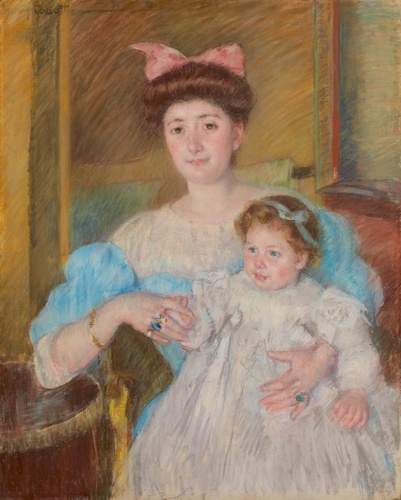
Claude Monet Boat Lying at Low Tide
1881
Oil on canvas
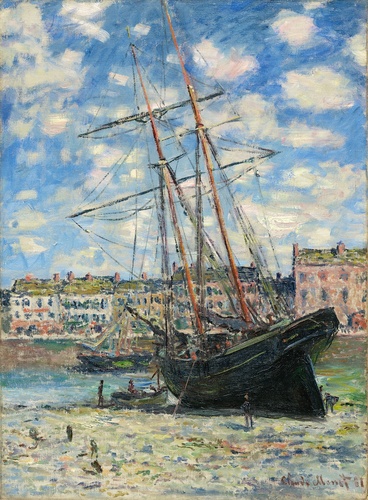
Claude Monet Water Lilies
1908
Oil on canvas
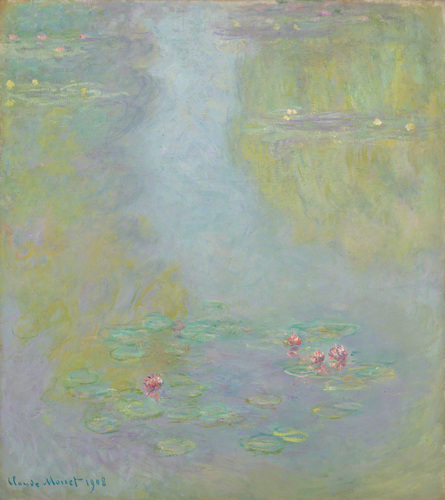
Maurice de Vlaminck Appearance of Houses at the Riverside of the Seine
c. 1910
Oil on canvas
Amedeo Modigliani Portrait of Dr. Paul Alexandre
1909
Oil on canvas
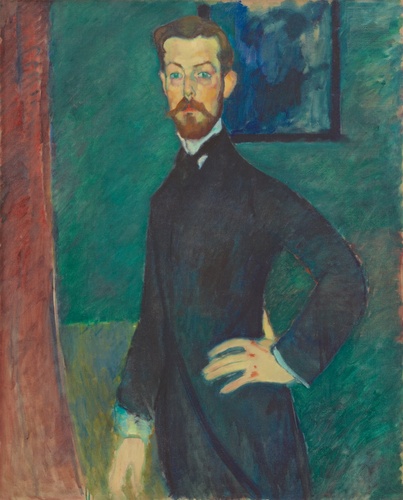
Maurice Utrillo Norvins Street, Montmartre
c. 1916
Oil on canvas
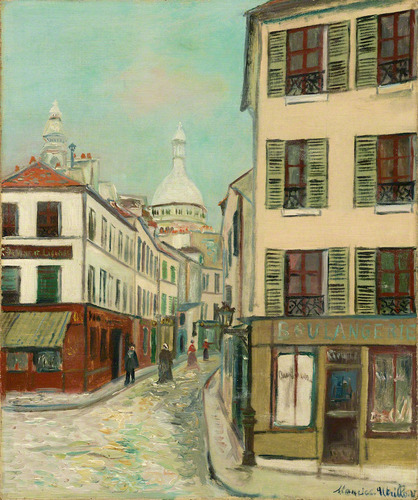
Marc Chagall The Circus
1967
Oil on paper mounted on canvas
Beauty of Chinese Craftworks of Qing Dynasty
Exhibition period Saturday, May 23 - Sunday, June 28, 1992
Osaka City Museum of Fine Arts (Osaka, Japan)
URL: https://www.osaka-art-museum.jp
Jing-de-zhen Ware Vasa with Design of Flower-and-bird, Over-glaze Enamels
Qing dynasty
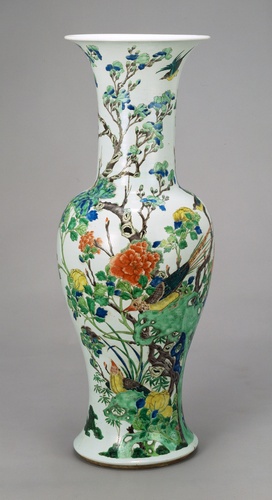
Jing-de-zhen Ware Square Vase with Design of Lotus Pond, Over-glaze Enamels
Qing dynasty
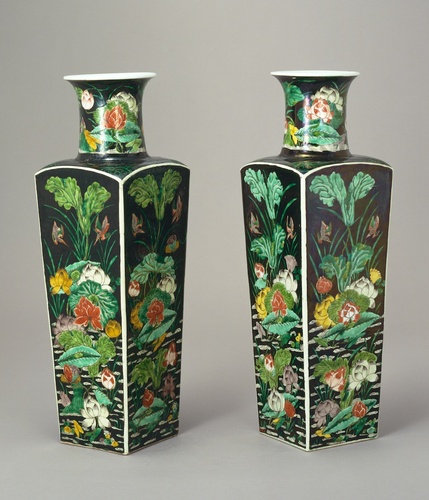
Jing-de-zhen Ware Flask with Circle Design, Under-glaze Blue and Red
Qing dynasty
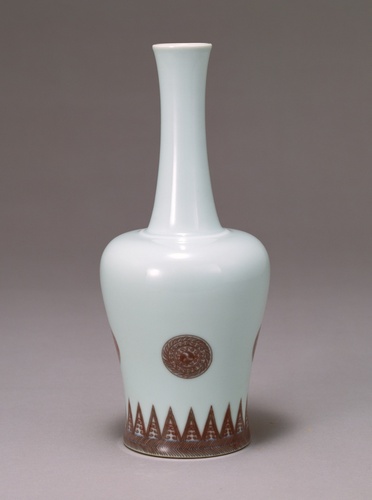
Jing-de-zhen Ware Jar withTwo Handles and Design of Deer with Landscape in Famille rose Enamels
Qing dynasty
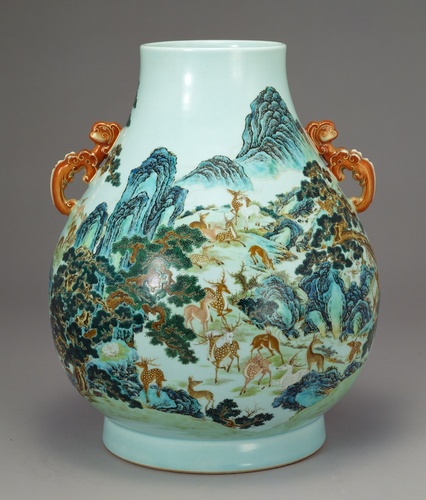
Rembrandt his Teachers and his Pupils
Exhibition period Wednesday, April 15 - Sunday, June 7, 1992
The Bunkamura Museum of Art (Tokyo, Japan)
URL: http://www.bunkamura.co.jp/
Treasures of Japanese Art from the TFAM Collection
Exhibition period Sunday, January 26 - Sunday, March 22, 1992
Kunstlerhaus (Vienna, Austria)
Attributed to Kano Eitoku (1543-1590) Folding Screen with Design of Birds and Waterfall
Momoyama Period (16th c.)
Ink on paper, two-fold screen
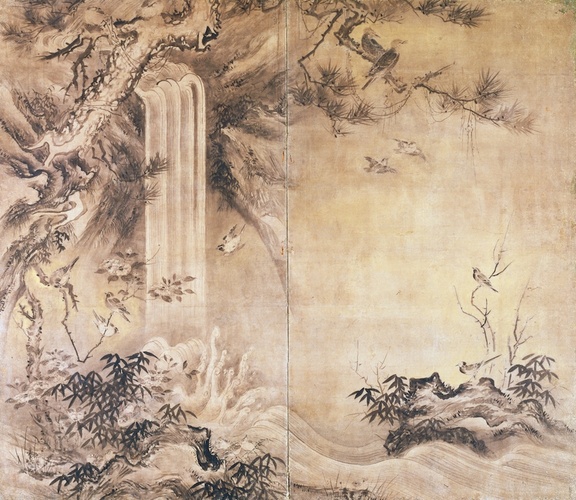
Kano School Folding Screen with Design of Grape Arbor
Momoyama Period (16th c.)
Color on gold-leaf paper, pair of six-fold screens
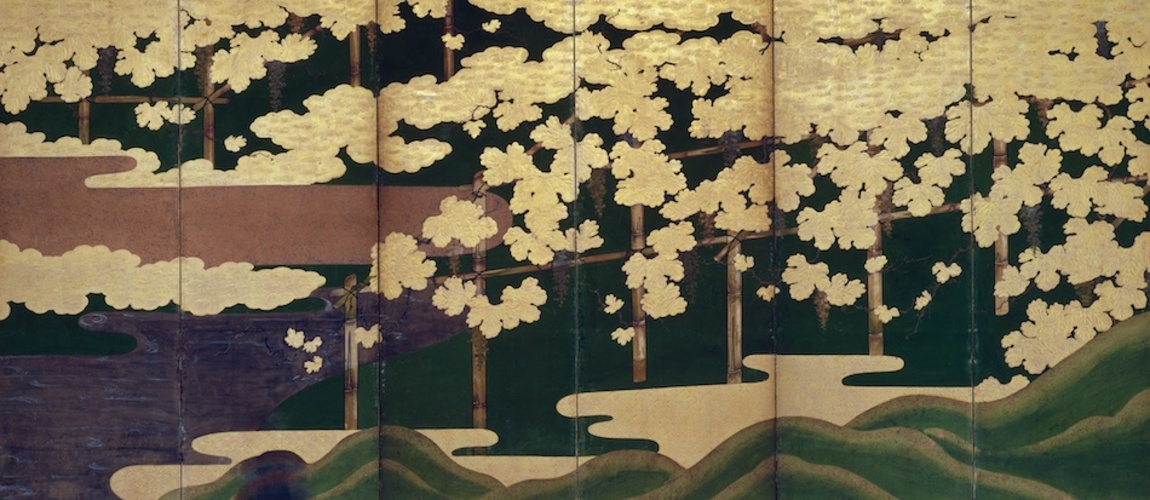
Artist Unknown Folding Screen with Design of Musashino Plain
Early Edo Period (17th c.)
Color on gold-leaf paper, pair of six-fold screens
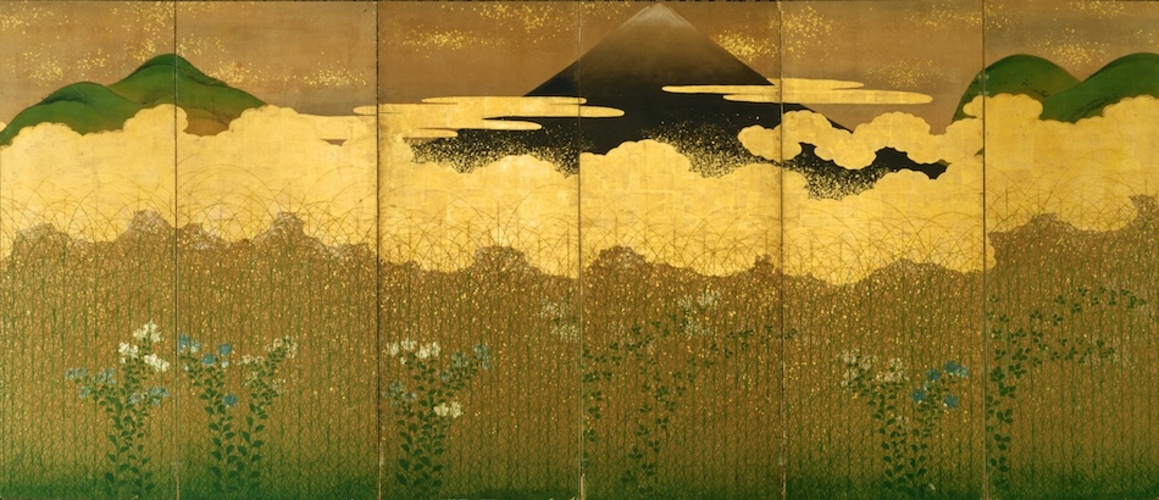
Attributed to Tawaraya Sotatsu Folding Screen with Design of Pine and Cherry Blossoms
Early Edo Period (17th c.)
Color on gold-leaf paper, six-fold screen
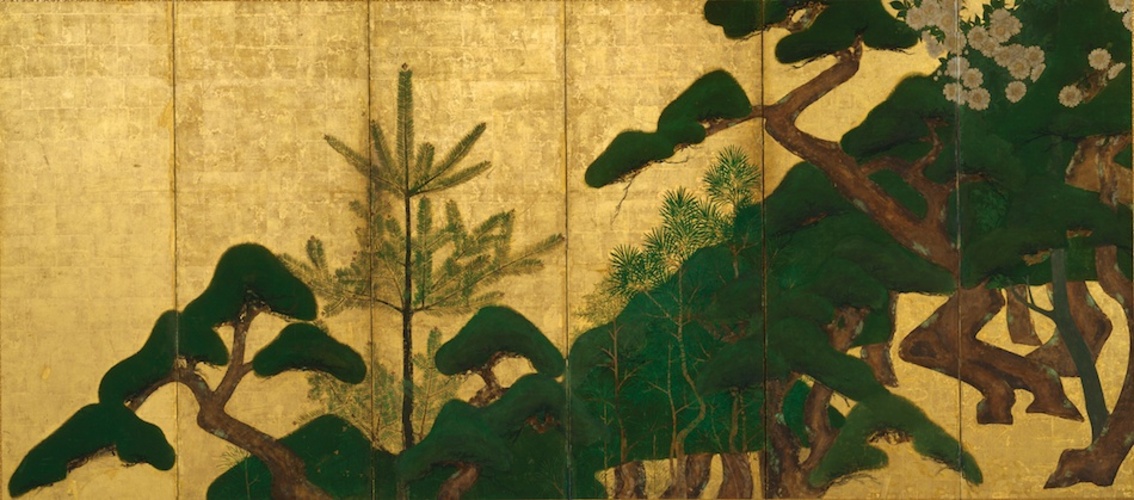
Rinpa School Folding Screen with Design of Rough Sea
Mid Edo Period (18th c.)
Color on gold-leaf paper, eight-fold screen

Rinpa School Folding Screen with Design of Plum Tree
Edo Period
Color on gold-leaf paper, two-fold screen
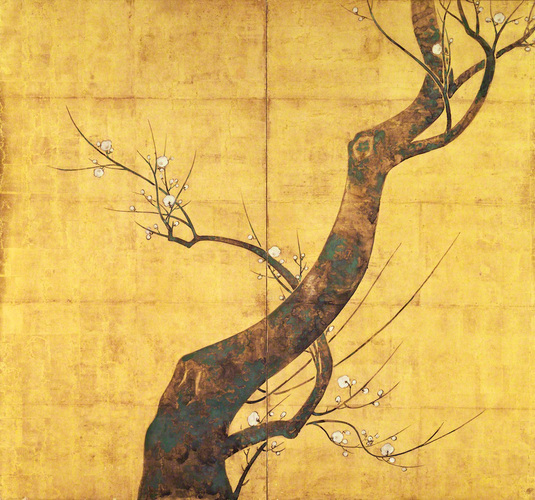
Kaiho Yusetsu Folding Screen with Design of the Scenes from The Battle of the Genji and Heike Clans
Early Edo Period (17th c.)
Color on gold-leaf paper, pair of six-fold screens
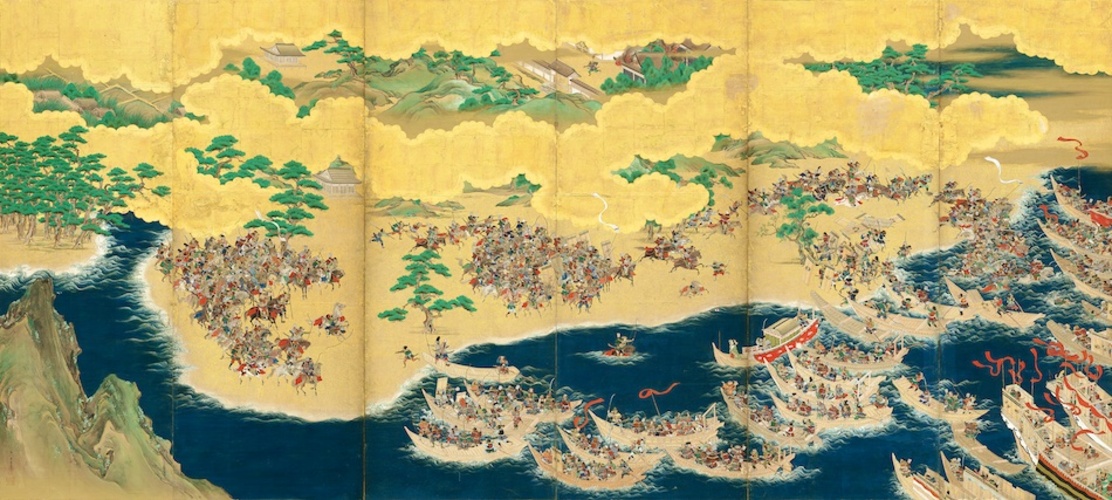
Kano Tsunenobu Folding Screen with Design of Scenery in the Four Seasons
Early Edo Period (17th c.)
Ink on paper, pair of six-fold screens
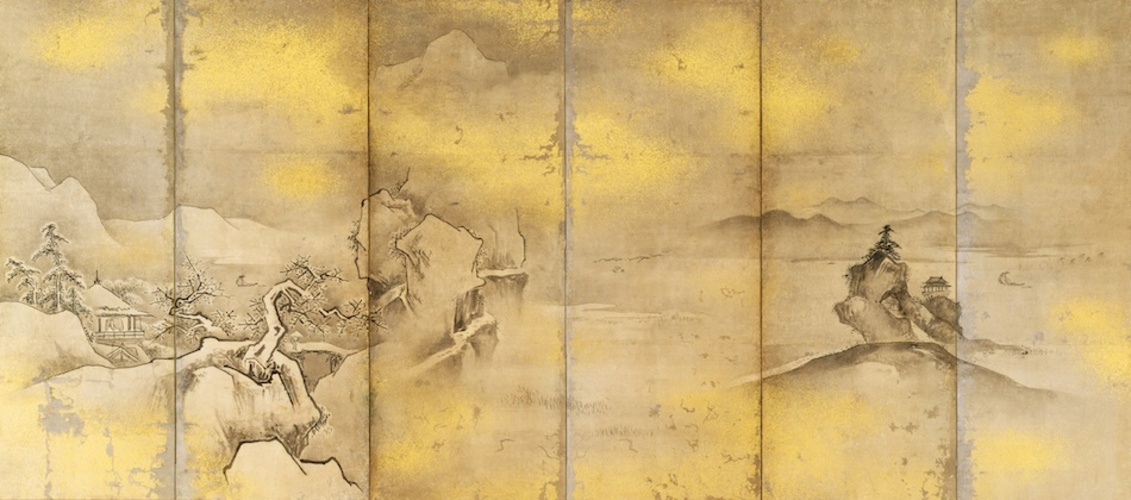
Artist Unknown Folding Screen with Design of the Scenes from the Tale of Genji
Mid-Late Edo Period
Color on gold-leaf paper, pair of six-fold screens
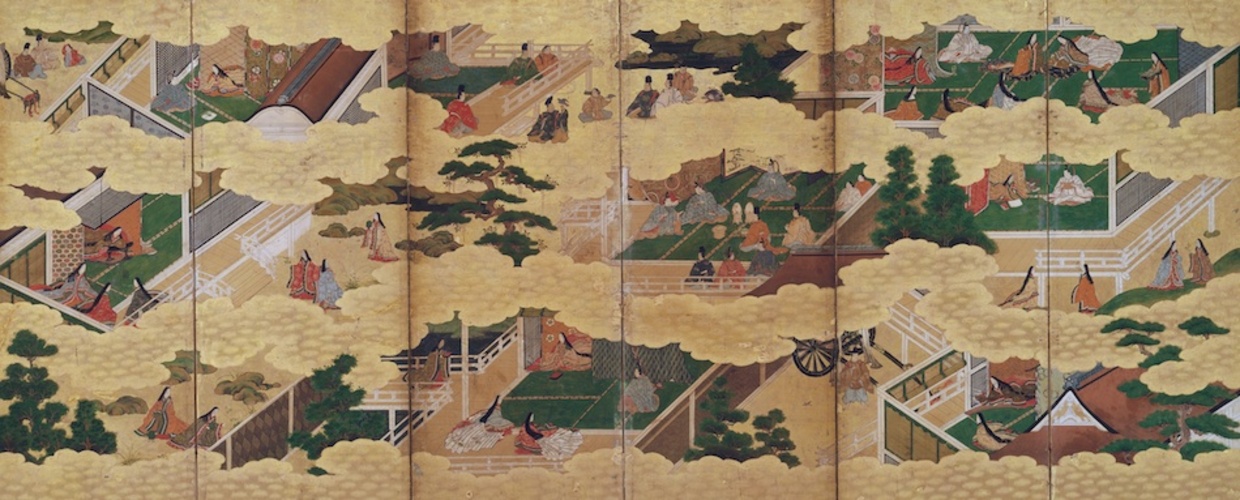
Iwasa School Folding Screen with Design of the Scenes from the Tale of Genji
Early Edo Period (17th c.)
Color on gold-leaf paper, pair of six-fold screens
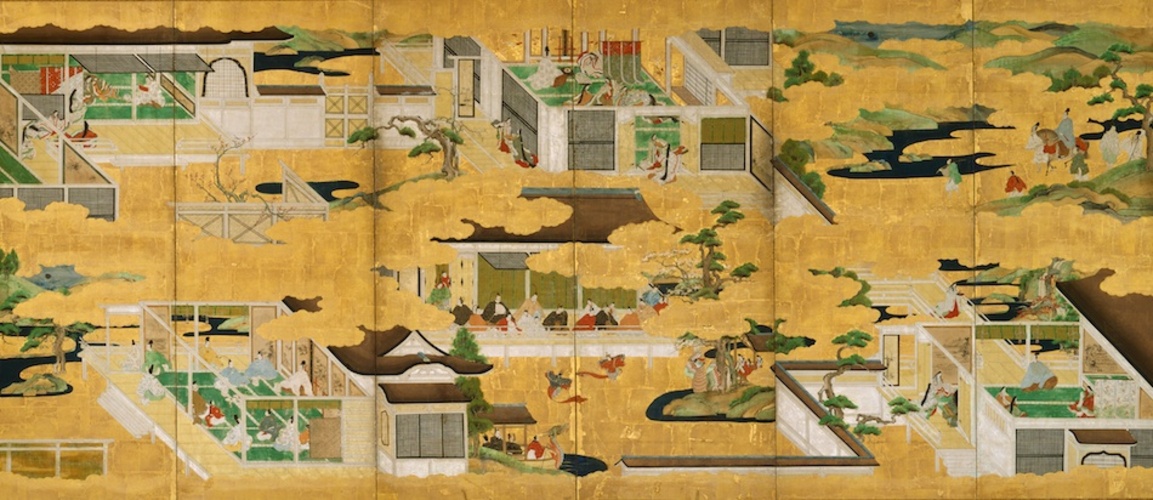
Tosa School Folding Screen with Design of the Scenes from the Tale of Heike – “Ohara-goko” and “Kogo”
Edo Period
Color on gold-leaf paper, pair of six-fold screens
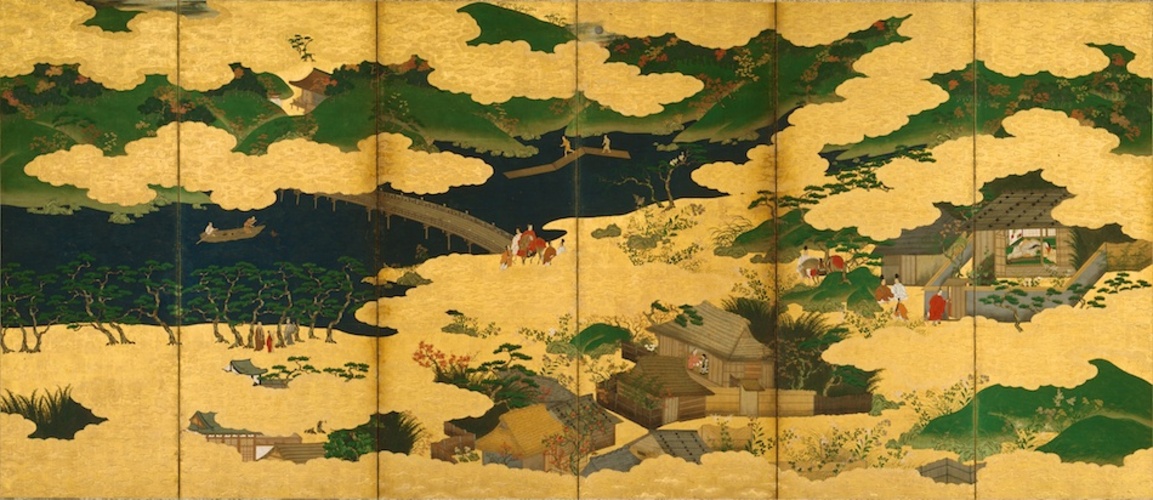
Soga Shohaku Folding Screen with Design of Cranes
Mid Edo Period (18th c.)
Ink and light color on paper, six-fold screen
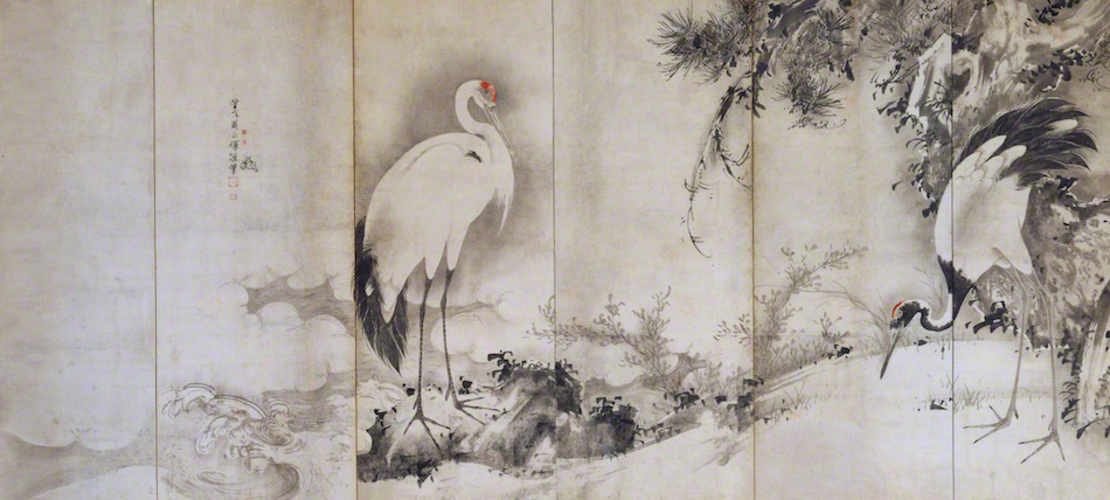
Tosa School Folding Screen with Design of the Battle of Ichinotani
Edo Period
Color on gold-leaf paper, six-fold screen
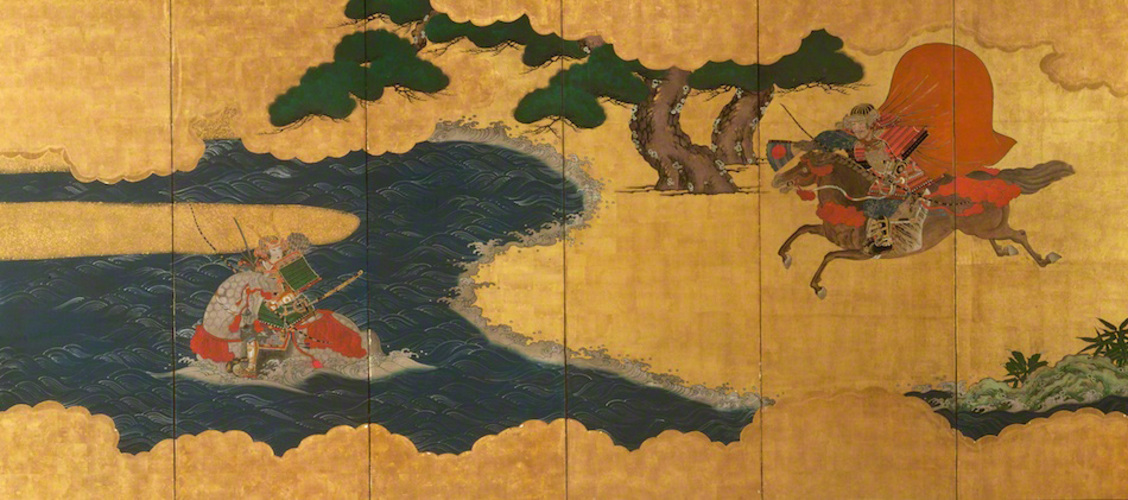
Tosa School Folding Screen with Design of the Battle at Uji River
Edo Period
Color on gold-leaf paper, six-fold screen
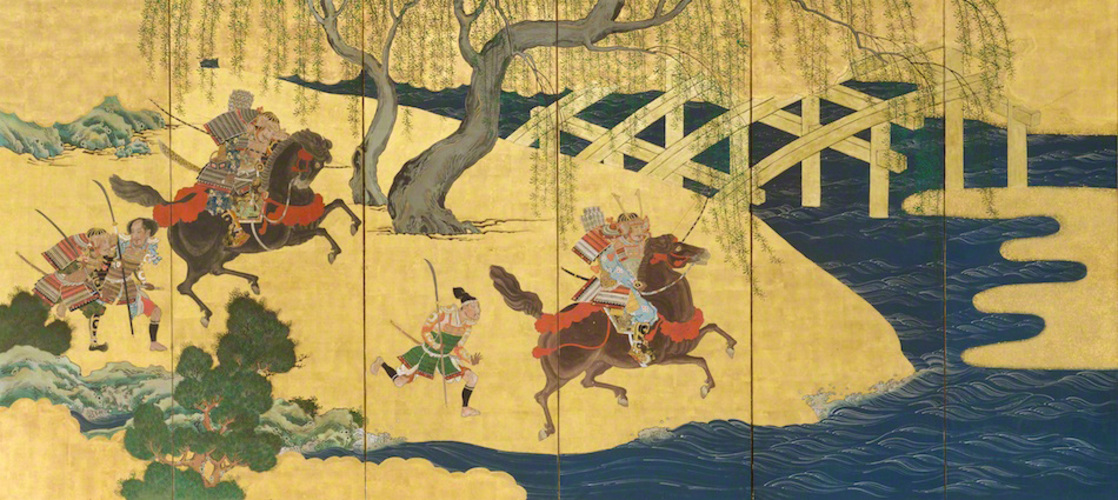
Kano School Folding Screen with Design of Chinese Phoenixes
Edo Period
Color on gold-leaf paper, pair of six-fold screens
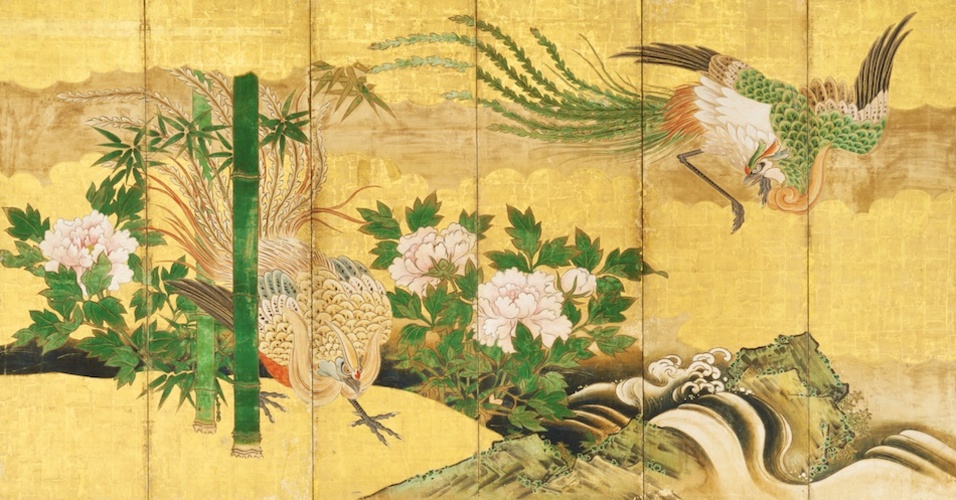
Suzuki Kiitsu Sliding Door with Design of Moon with Bush Clovers
Late Edo Period (19th c.)
Color on silk, four sliding doors
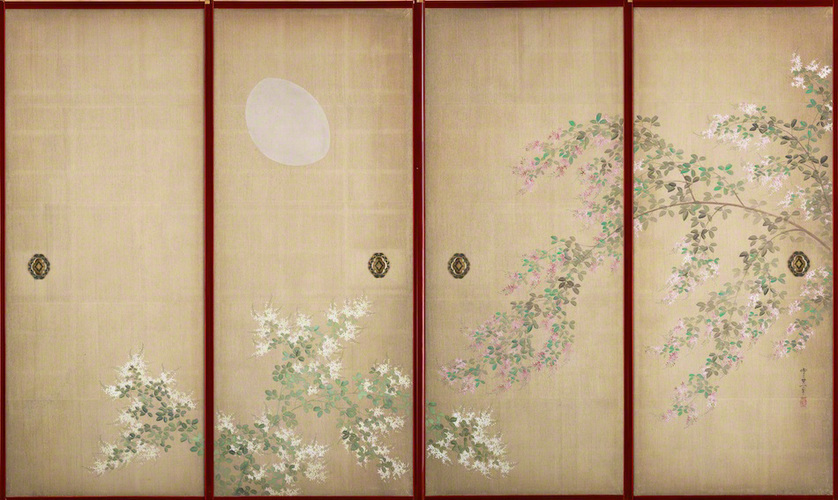
Kano School Folding Screen with Design of Mt. Yoshino and Tatsuta River
Early Edo Period (17th c.)
Color on paper, pair of six-fold screens
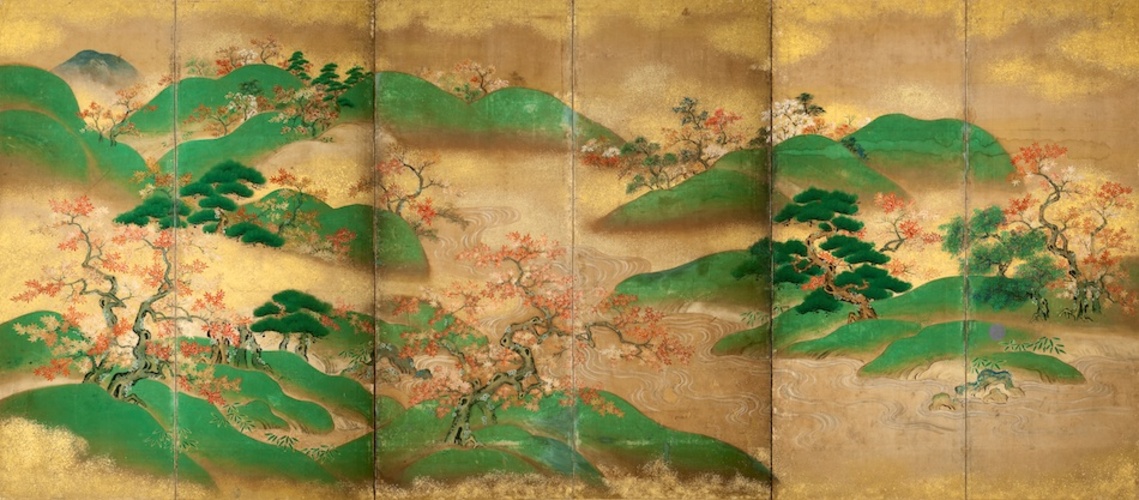
Calligraphy: Attributed to Hon’ami Koetsu (1558-1637), Painting: Sotatsu School Chinese Poem from ‘Wakan-Roeishu,’ Anthology of Japanese and Chinese Poetry, with Design of Flowering Grasses
Early Edo Period (17th c.)
Ink and color on gold-leaf paper, hanging scroll
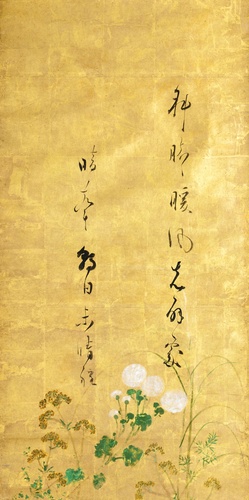
Kano Masunobu Yearning for a Loved One
Early Edo Period (17th c.)
Color on paper, hanging scroll
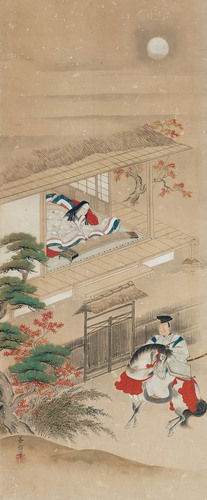
Kano Masunobu Tama River in Ide
Early Edo Period (17th c.)
Color on paper, hanging scroll
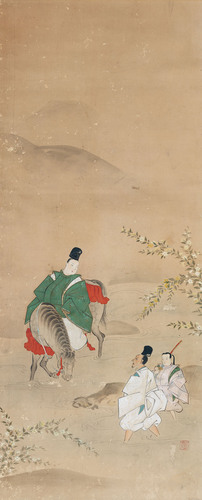
Gigado Ashiyuki The Actors Fujikawa Tomokichi as Aoyagi Dayu and Nakamura Utaemon III as the Peasant Jusaku
1828 (Bunsei 11)
Color woodblock print on paper (diptych)
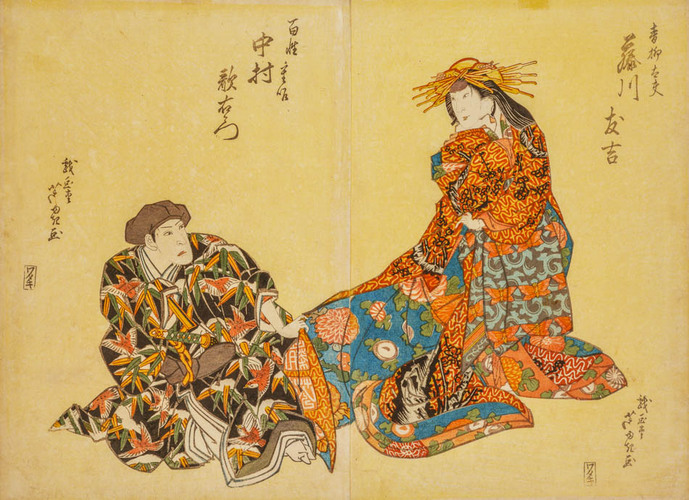
Gigado Ashiyuki The Actors Fujikawa Tomokichi as Aoyagi Dayu and Nakamura Utaemon III as the Peasant Jusaku
1828 (Bunsei 11)
Color woodblock print on paper (diptych)
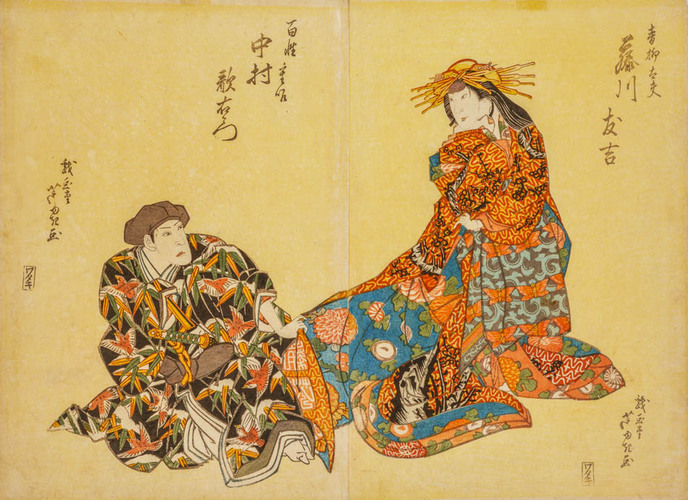
Jukodo Yoshikuni The Actors Seki Sanjuro II as Teraoka Heiemon and Nakamura Matsue III as Okaru
1827 (Bunsei 10)
Color woodblock print on paper (diptych)
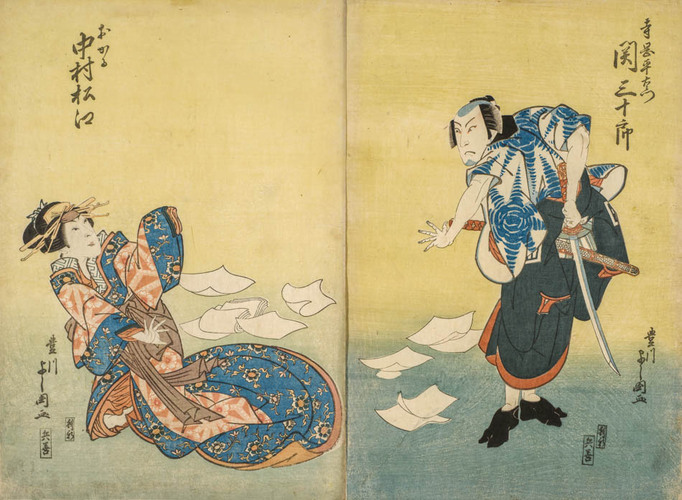
Jukodo Yoshikuni The Actors Seki Sanjuro II as Teraoka Heiemon and Nakamura Matsue III as Okaru
1827 (Bunsei 10)
Color woodblock print on paper (diptych)
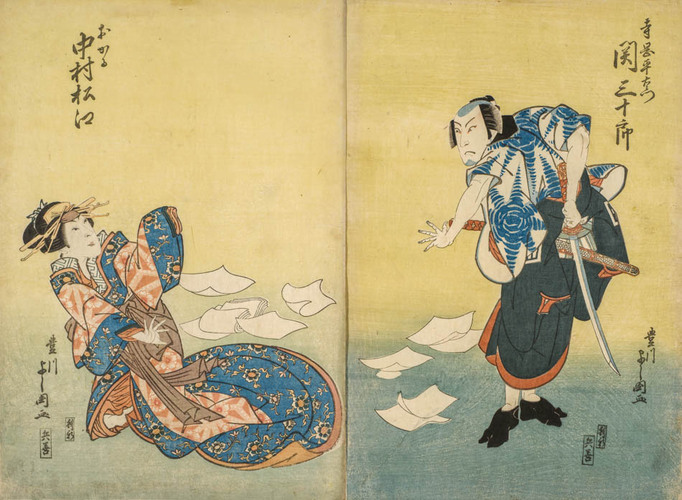
Ryusai Shigeharu The Actors Arashi Kitsusaburo as Wife Kasane and Sawamura Kunitaro II as Otake
1828 (Bunsei 11)
Color woodblock print on paper (diptych)
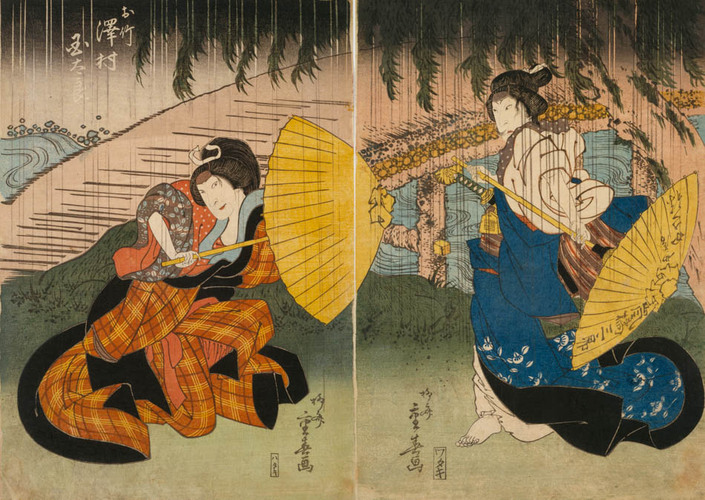
Ryusai Shigeharu The Actors Arashi Kitsusaburo as Wife Kasane and Sawamura Kunitaro II as Otake
1828 (Bunsei 11)
Color woodblock print on paper (diptych)
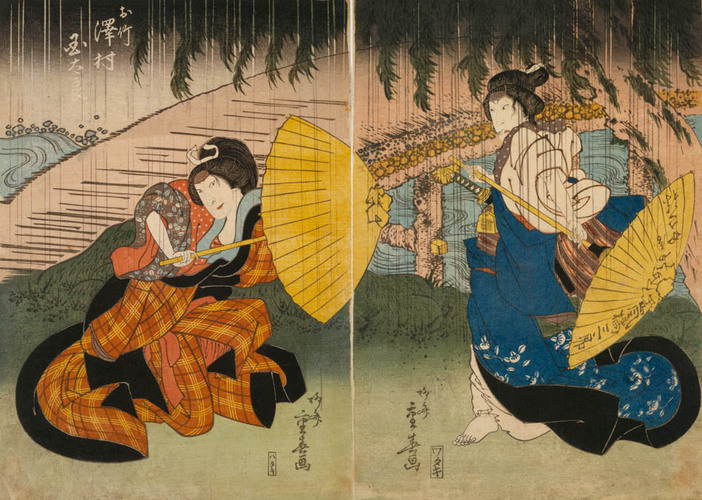
Ryusai Shigeharu The Actor Nakamura Utaemon III as Jiraiya
1832 (Tenpo 3)
Color woodblock print on paper
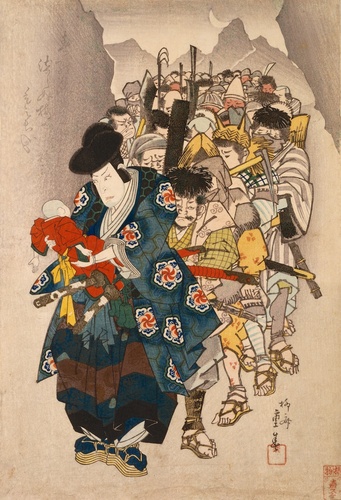
Shunbaisai Hokuei The Actors Arashi Rikan II as Karahashi Sakujuro and Asao Takumi as Daidoji Gakutaro
1831 (Tenpo 2)
Color woodblock print on paper (diptych)
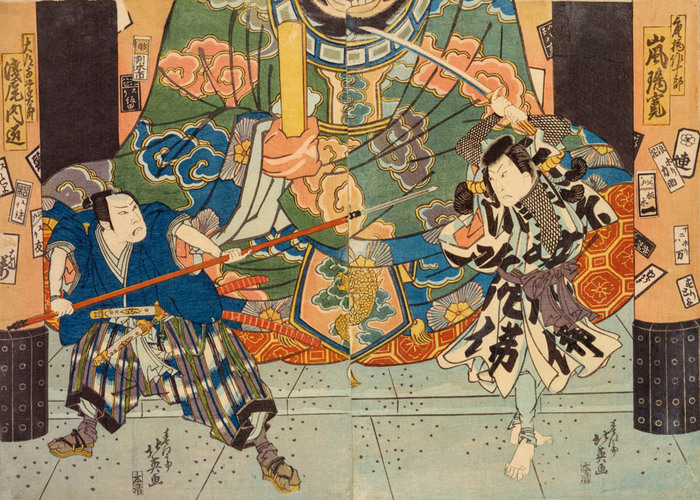
Shunbaisai Hokuei The Actors Arashi Rikan II as Karahashi Sakujuro and Asao Takumi as Daidoji Gakutaro
1831 (Tenpo 2)
Color woodblock print on paper (diptych)
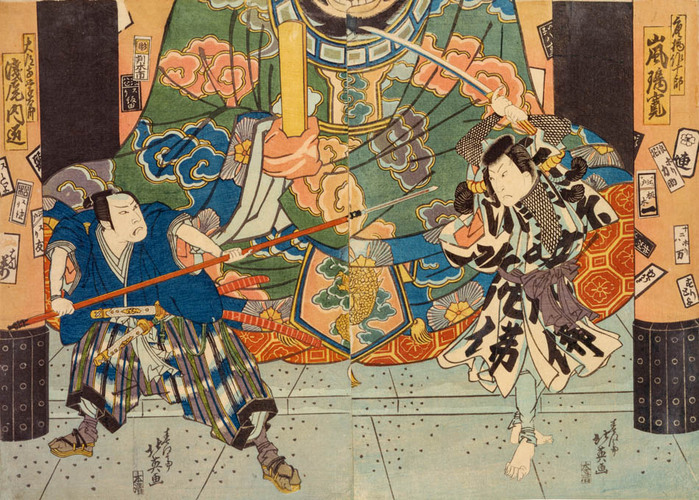
Utagawa Toyokuni The Actors Matsumoto Koshiro V as Akahori Mizuemon and Iwai Kumesaburo as the Geisha Omatsu
1823 (Bunsei 6)
Color woodblock print on paper (diptych)
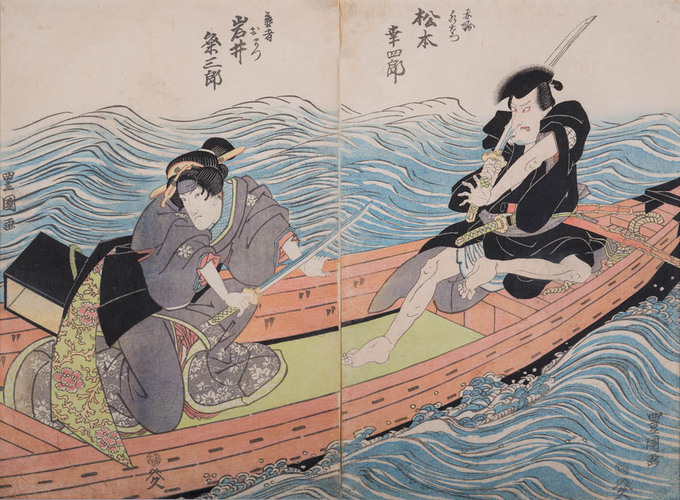
Utagawa Toyokuni Cherry Blossoms in the Shin-Yoshiwara Courtesan’s District
1818-30 (Bunsei era)
Color woodblock print on paper (pentaptych)

Utagawa Kunisada The Actors Nakamura Shikan II as the Mansarvant Kajihei, later Shiozawa Tanzo, Segawa Kikunojo V as Kajihei's Wife Tsukisayo, Mimasu Gennosuke as Ikazuchi Tsurunosuke
1829 (Bunsei 12)
Color woodblock print on paper (triptych)
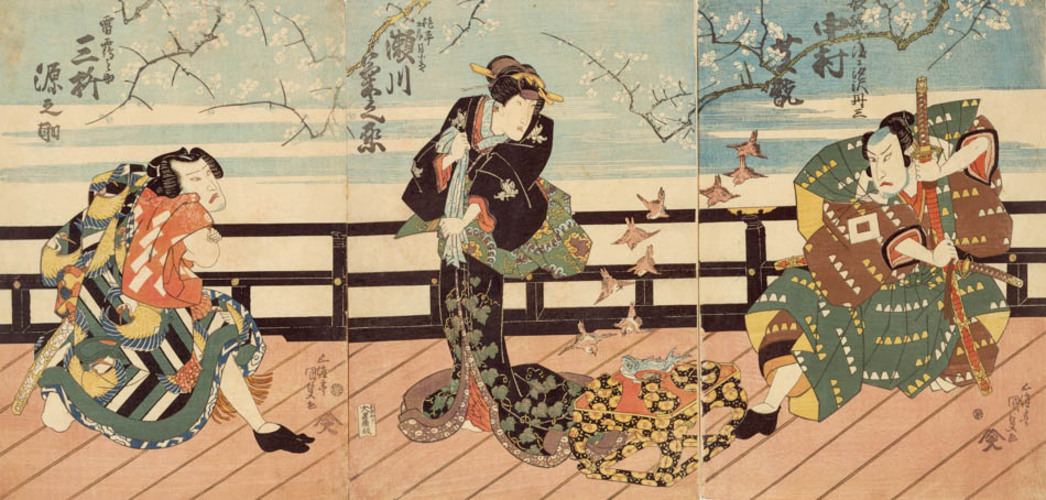
Keisai Eisen Enjoying the Cool Evening Breeze on the Ryogoku Bridge in Edo
1830-44 (Tenpo era)
Color woodblock print on paper (triptych)
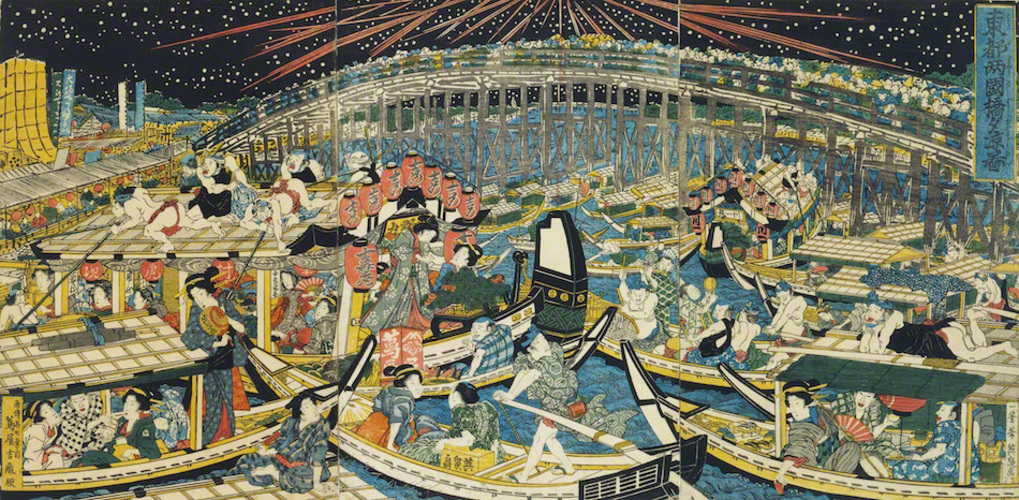
Utagawa Kuniyasu The Actor Sawamura Tossho as Ono no Tofu and the Actor Kataoka Ichizo as Tokko no Daroku
1832 (Tenpo 3)
Color woodblock print on paper (diptych)
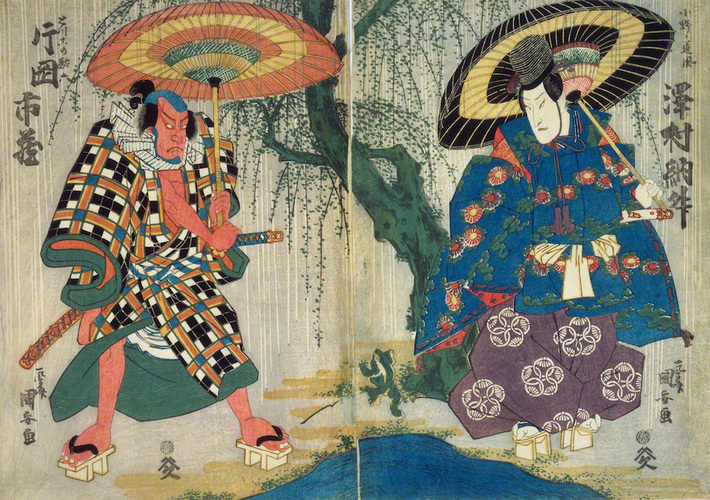
Utagawa Kuniyoshi The Battle at Uji River
1831-32
Color woodblock print on paper (triptych)
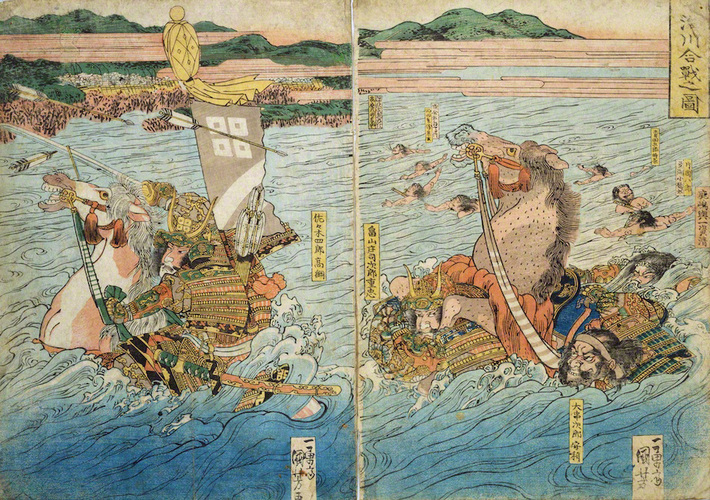
Utagawa Kuniyoshi The Actor Ichikawa Danjuro as Shirai Gonpachi and the Actor Sawamura Sojuro as Shirae Juemon
1847 (Koka 4)
Color woodblock print on paper (diptych)
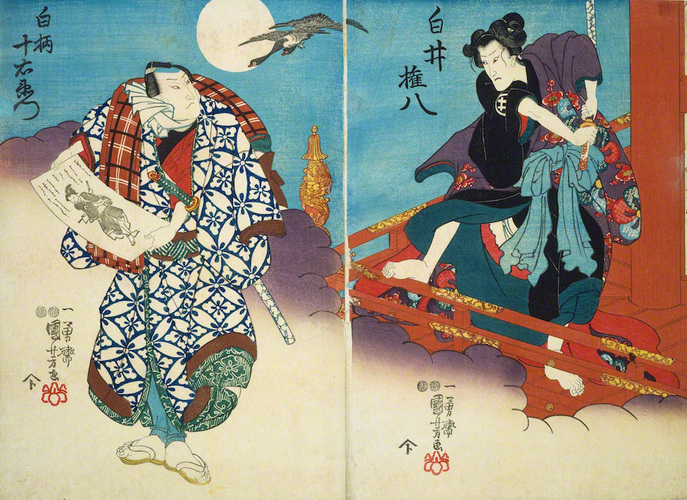
Katsushika Hokusai Thirty-six Views of Mount Fuji: Mitsui Store at Suruga-cho in Edo
c. 1830-32(Tenpo 1-3)
Color woodblock print on paper
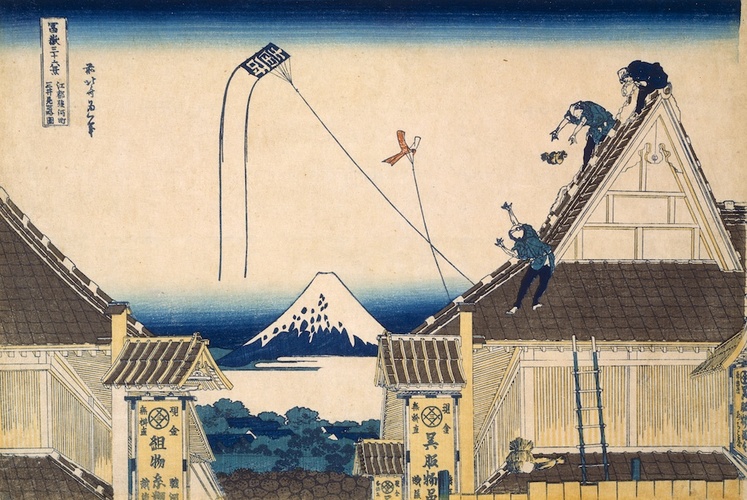
Katsushika Hokusai Thirty-six Views of Mount Fuji: Lake Suwa in Shinano Province
c. 1830-32(Tenpo 1-3)
Color woodblock print on paper
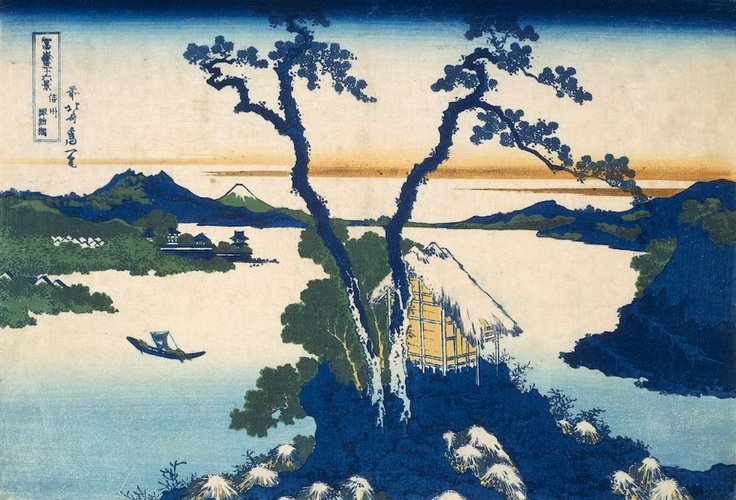
Katsushika Hokusai Thirty-six Views of Mount Fuji: Mt. Fuji from Gotenyama Hill in Shinagawa on the Tokaido
c. 1830-32(Tenpo 1-3)
Color woodblock print on paper
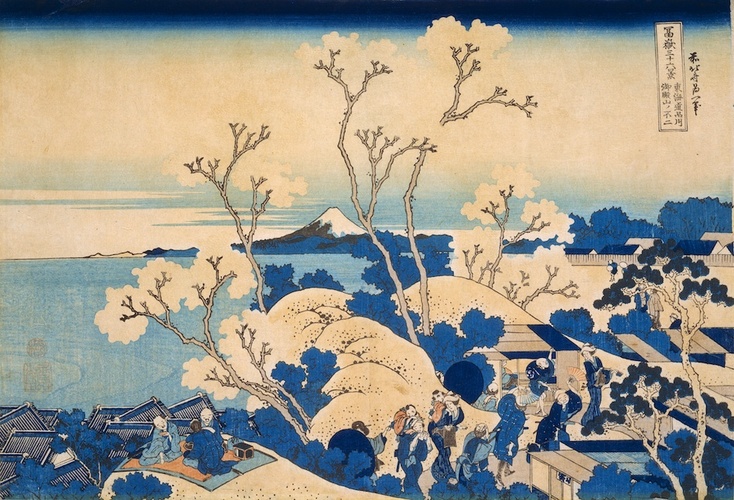
Utagawa Hiroshige Fifty-three Stations on the Tokaido: Night Snow at Kanbara
1833-34 (Tenpo 4-5)
Color woodblock print on paper
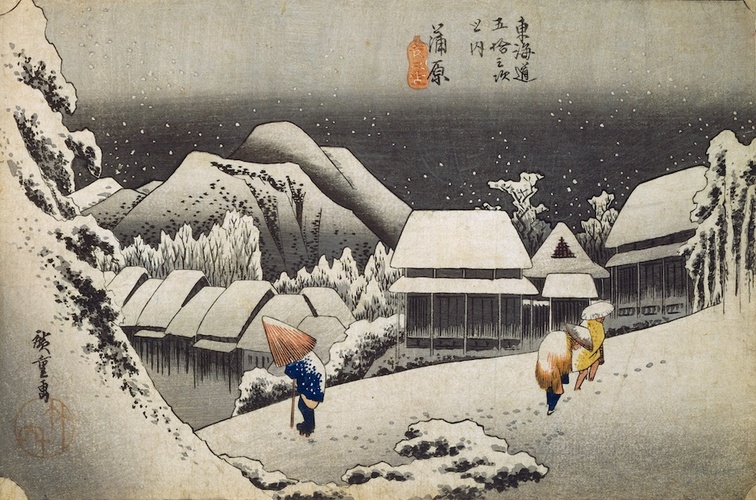
Utagawa Hiroshige Fifty-three Stations on the Tokaido: Suruga Bank of the Oi River at Shimada
1833-34 (Tenpo 4-5)
Color woodblock print on paper
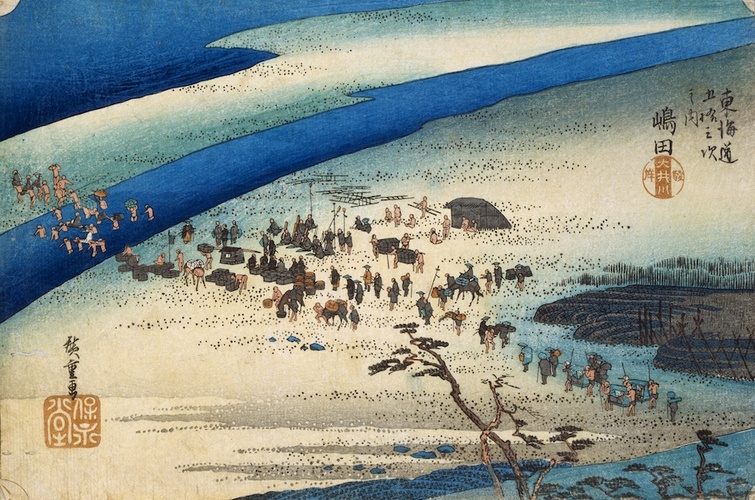
Utagawa Hiroshige Fifty-three Stations on the Tokaido: Yahagi Bridge at Okazaki
1833-34 (Tenpo 4-5)
Color woodblock print on paper
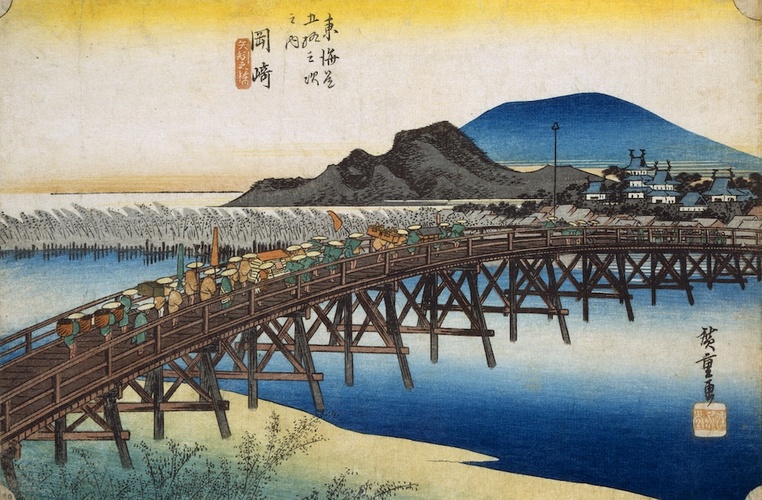
Katsushika Hokusai Fifty-three Stations on the Tokaido: Illustrated Book of Ekiro-no-Suzu
c. 1810
Color woodblock print on paper, book illustrations
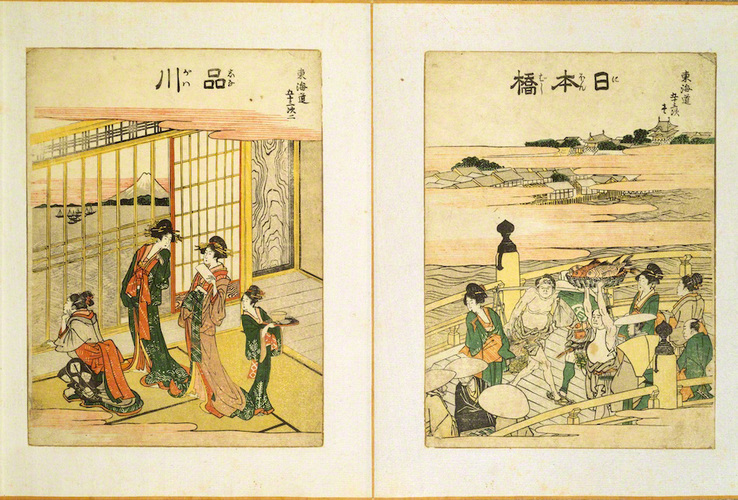
Writing Box with Design of Willow, Bridge and Waterwheel in Maki-e Lacquer
Mid-Late Edo Period (18-19th c.)
Lacquered wood
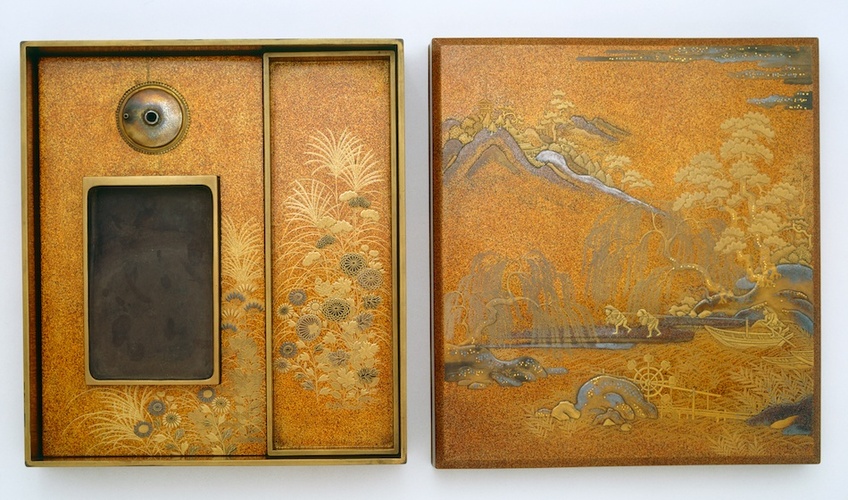
Writing Box with Design of Paulownia and Phoenix in Maki-e Lacquer
Momoyama-Edo Period (17th c.)
Lacquered wood
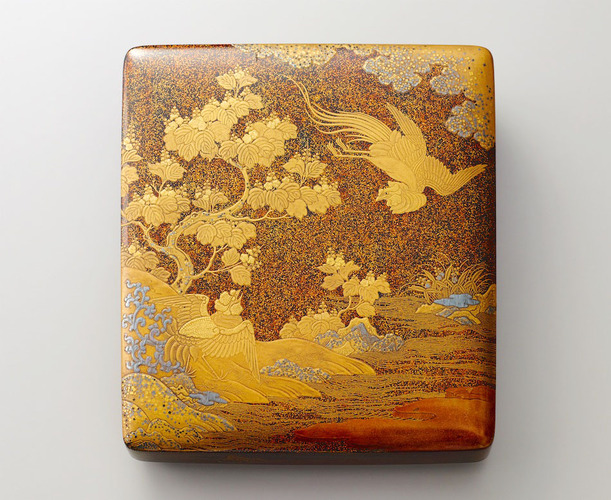
Writing Box with Design of Grapes and Eulalia in Maki-e Lacquer
Mid Edo Period (18th c.)
Lacquered wood
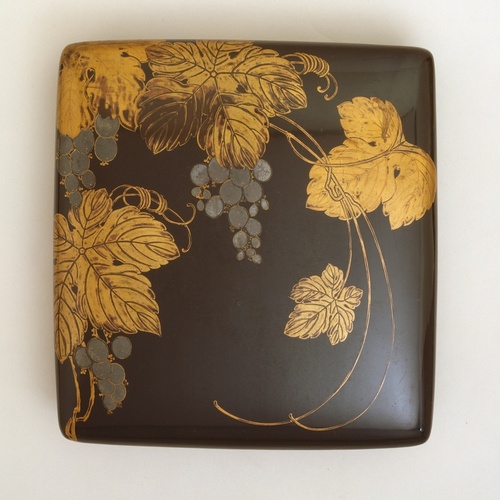
Writing Box with Design of Landscape in Maki-e Lacquer
Early-Mid Edo Period (17-18th c.)
Lacquered wood
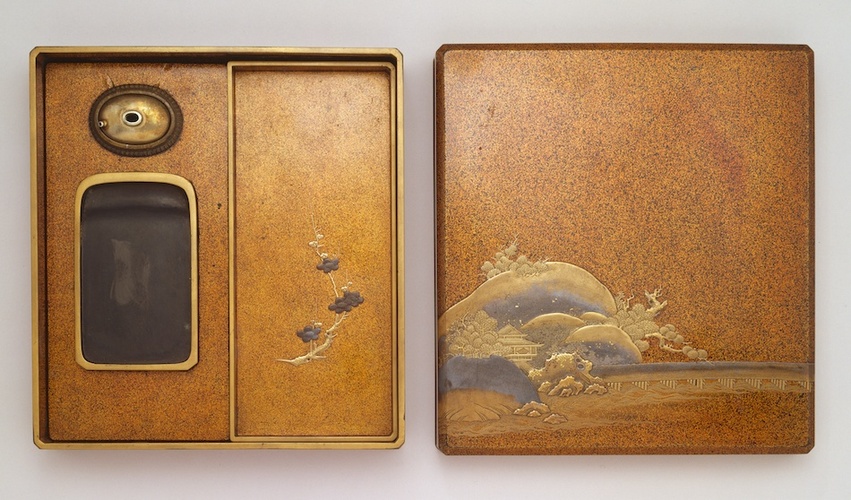
Writing Box with Design of Tanzaku Papers and Chrysanthemums in Maki-e and Mother-of-Pearl Inlay
Taisho-Showa Period (20th c.)
Lacquered wood
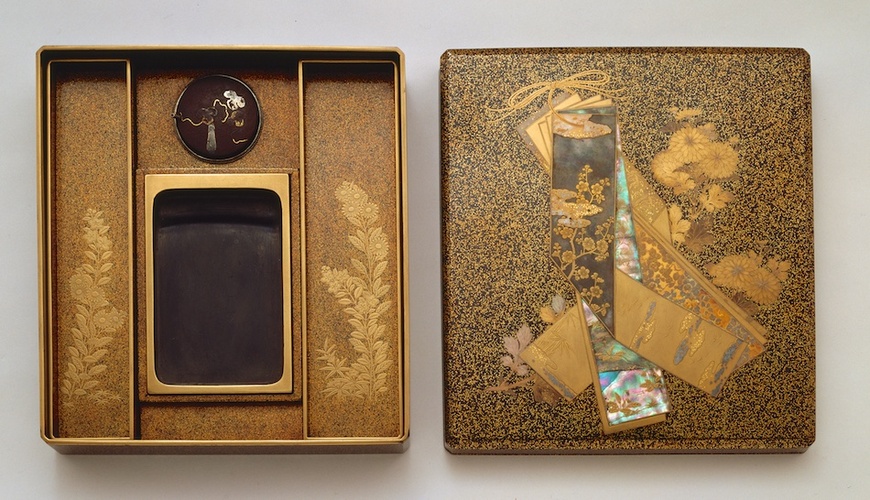
Zohiko Writing Box with Design of the Scene from “Hatsune” Chapter of the Tale of Genji in Maki-e Lacquer
20th c.
Lacquered wood
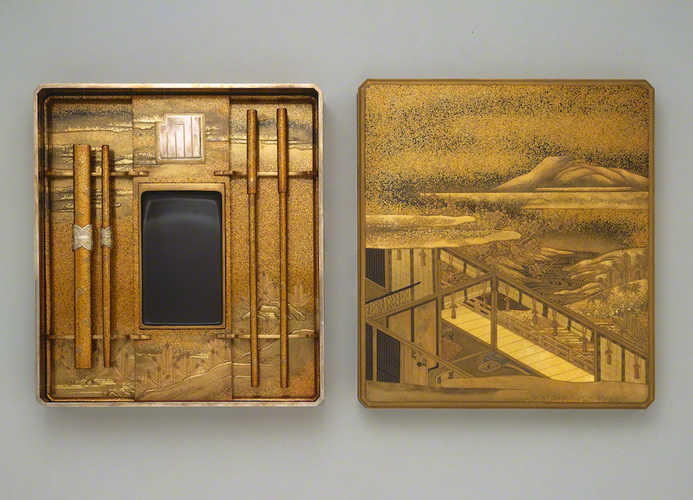
Zohiko Writing Desk with Design of the Scene from “Hatsune” Chapter of the Tale of Genji in Maki-e Lacquer
20th c.
Lacquered wood
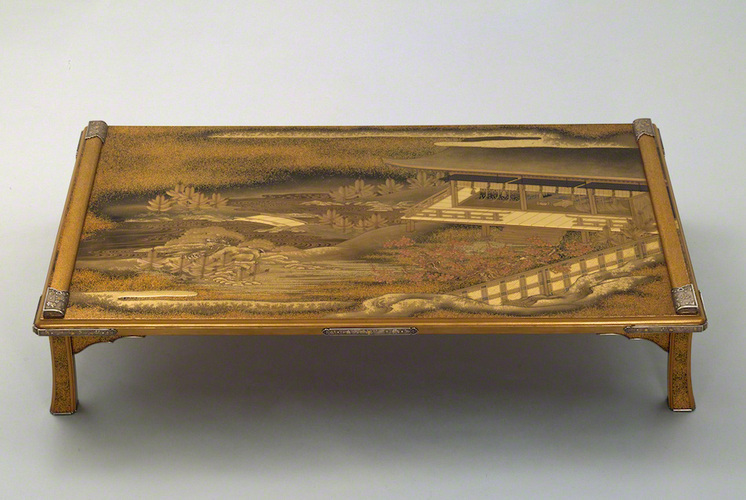
Writing Box with Design of Hozu River in Maki-e Lacquer
Showa Period (20th c.)
Lacquered wood
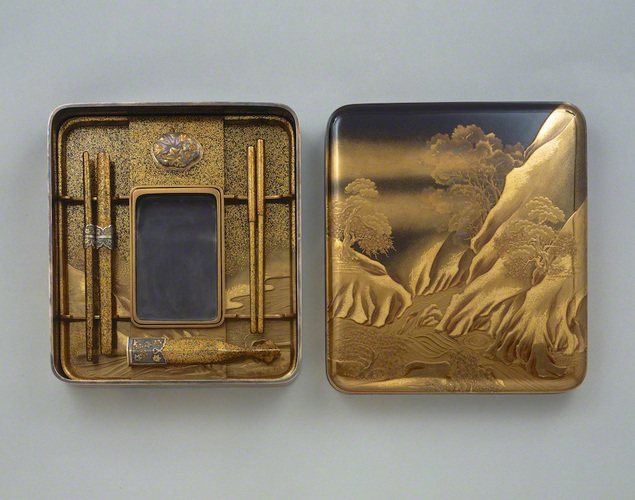
Writing Desk with Design of Hozu River in Maki-e Lacquer
Showa Period (20th c.)
Lacquered wood
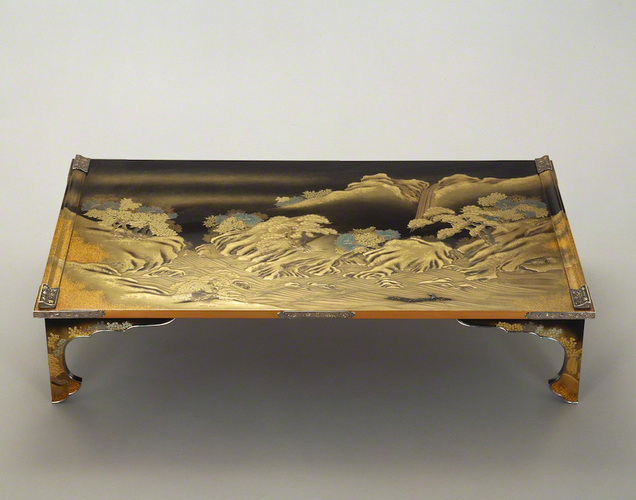
Set of Ten Writing Boxes with Casket with Design of Auspicious Patterns in Maki-e Lacquer
Edo Period
Lacquered wood
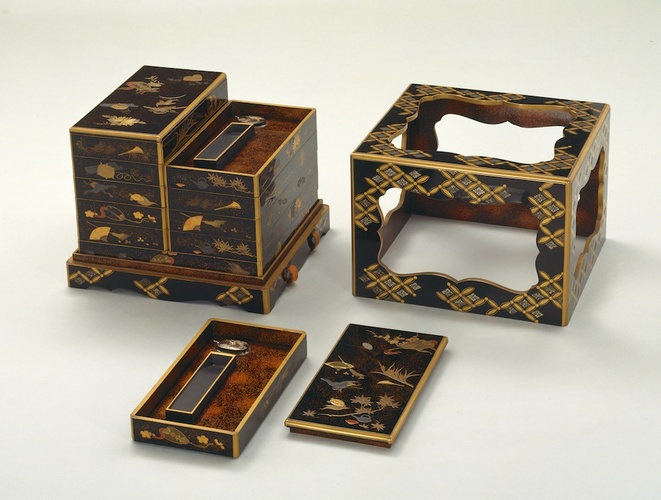
Letter Box with Design of Scattered Crests in Maki-e Lacquer
Late Edo Period (19th c.)
Lacquered wood
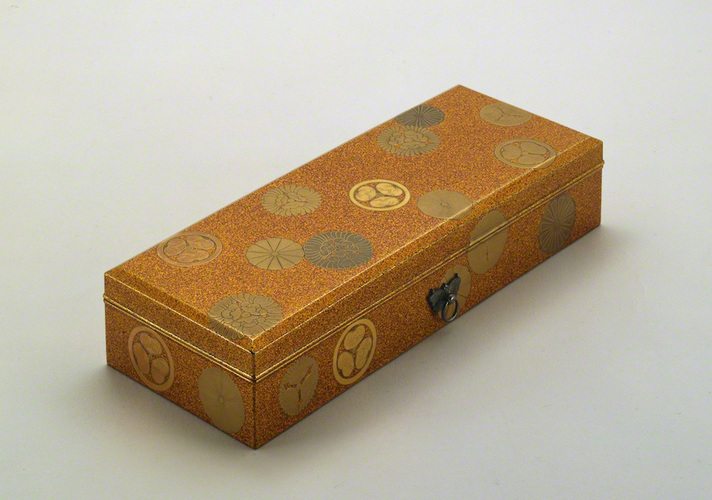
Square Goten-Hibachi Brazier with Design of Peony in Maki-e Lacquer
Edo Period
Lacquered wood
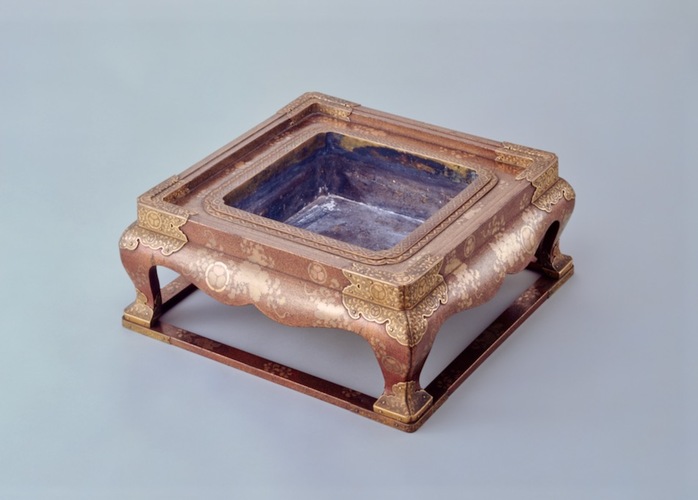
Picnic Box with Design of Plum, Rice-Ear, and Chrysanthemum in Maki-e Lacquer
Mid-Late Edo Period (18-19th c.)
Lacquered wood
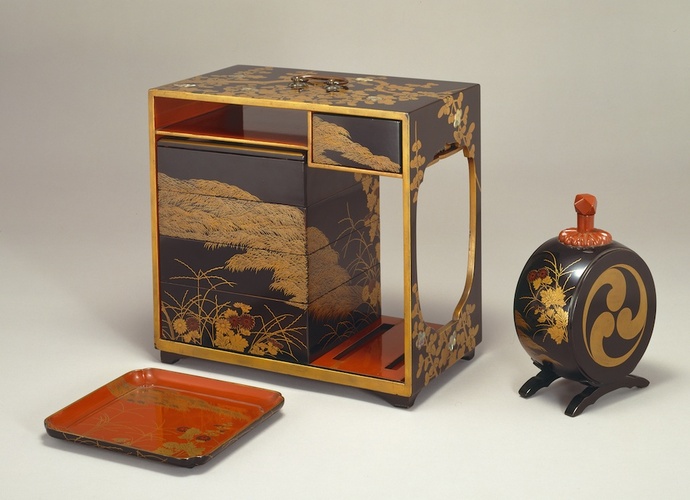
Armrest with Design of Fans in Maki-e Lacquer
Early-Mid Edo Period (17-18th c.)
Lacquered wood
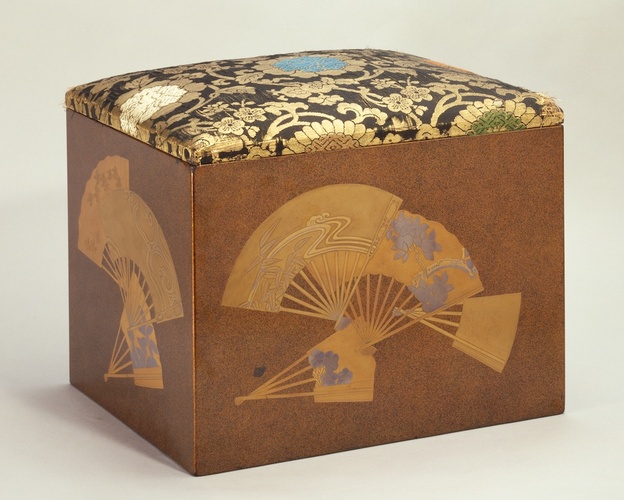
Used by Mune Hime (Princess Mune) The Date Family’s Palanquin with Arabesque Design in Maki-e Lacquer
Mid Edo Period (18th c.)
Lacquered wood
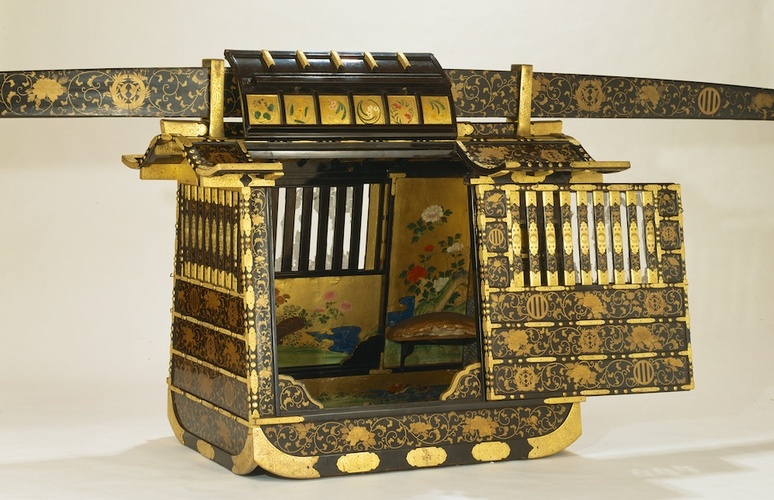
Kawakami Kangetsu Inro (Medicine Case) with Design of Scattered Fans in Maki-e Lacquer
Meiji-Taisho Period (19-20th c.)
Lacquered wood
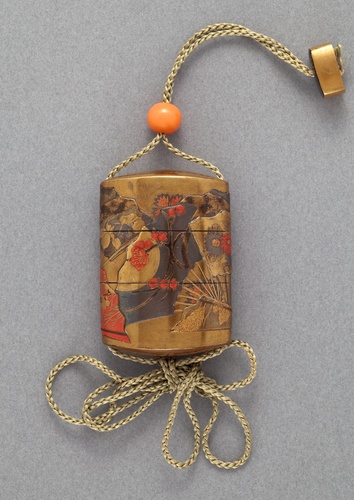
Kajikawa Inro (Medicine Case) with Design of Noh Play “Shakkyo” in Maki-e Lacquer
Late Edo Period (19th c.)
Lacquered wood
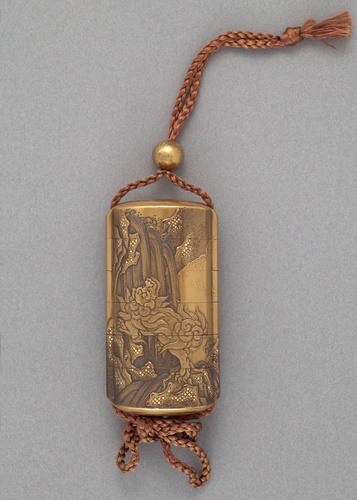
Shibayama Inro (Medicine Case) with Design of Hawk and Pine Tree in Maki-e Lacquer
Meiji Period (19th c.)
Lacquered wood
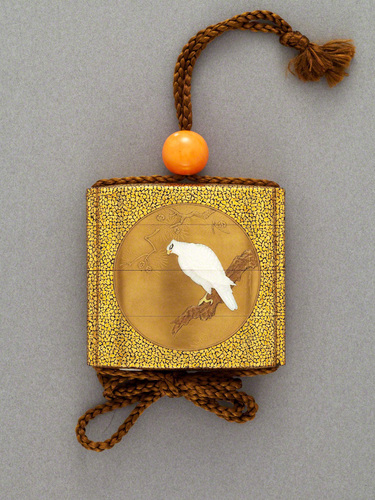
Shiomi Masanari Inro Medicine Case with Design of Horses in Maki-e Lacquer
Mid Edo Period (18th c.)
Lacquered wood
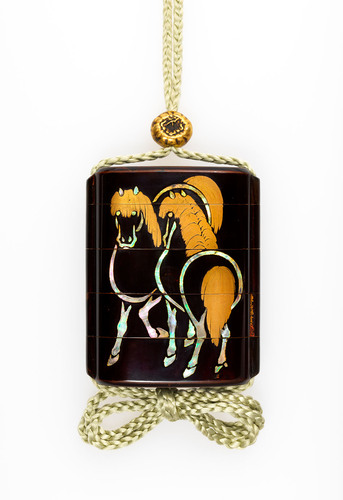
Ishii Utokusai Inro Medicine Case with Design of Noh Dance in Maki-e Lacquer
End of Edo Period (19th c.)
Lacquered wood
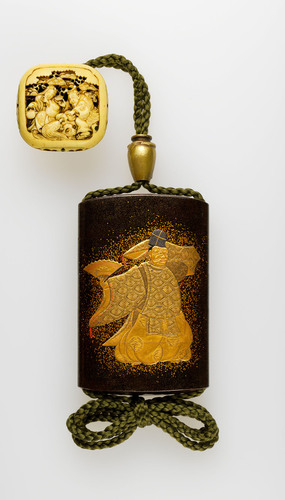
Shokasai Inro (Medicine Case) with Design of Horses in Maki-e Lacquer
Edo-Meiji Period (19th c.)
Lacquered wood
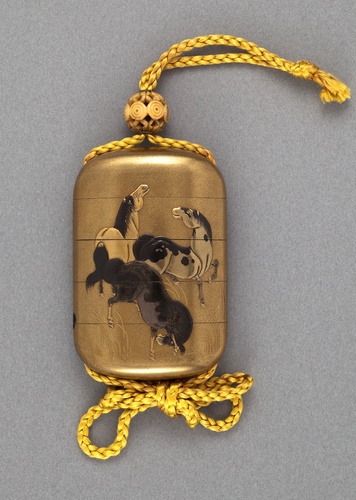
Shibayama Inro (Medicine Case) with Design of Waterwheel in Maki-e and Mother-of-Pearl Inlay
Meiji Period (19th c.)
Lacquered wood
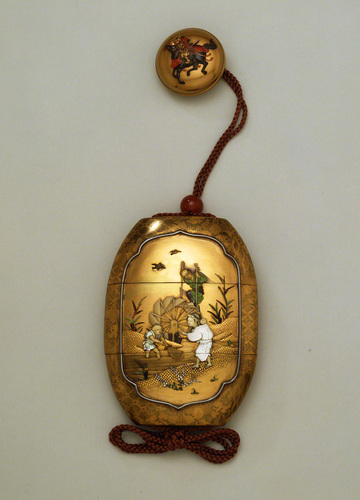
Negoro Style Hot-Water Pot
Early Edo Period (17th c.)
Lacquered wood
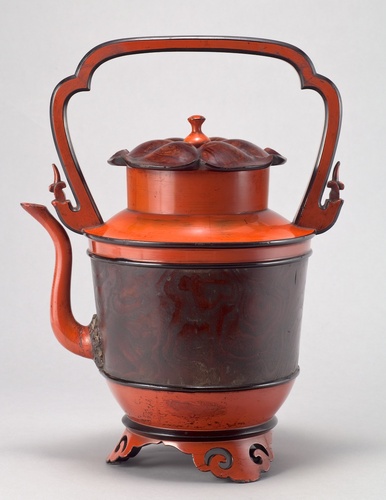
Negoro Style Three Footed Bowl
Early Edo Period (17th c.)
Lacquered wood
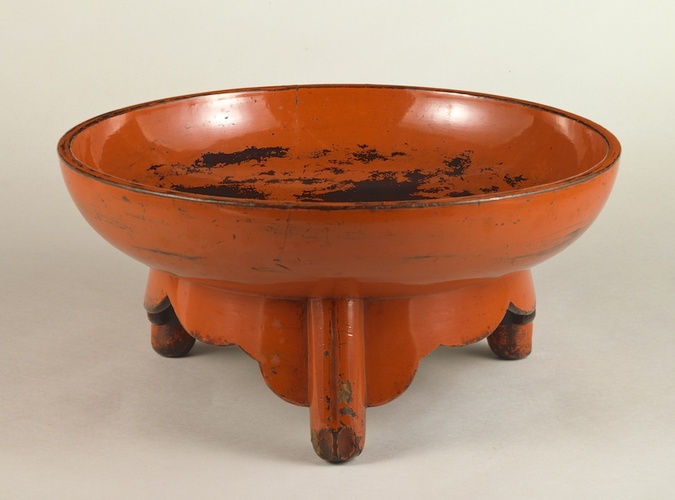
Worn by Shimazu Nariakira Suit of Armor in O-yoroi Style
Late Edo Period (19th c.)
Iron, silk, leather, reed, lacquer, copper
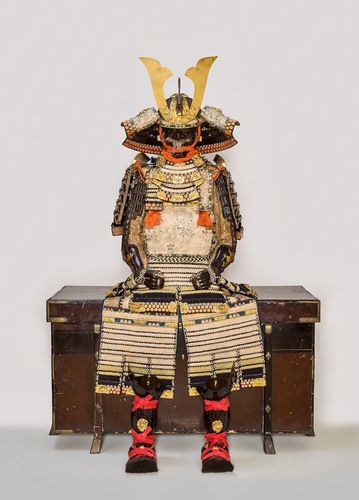
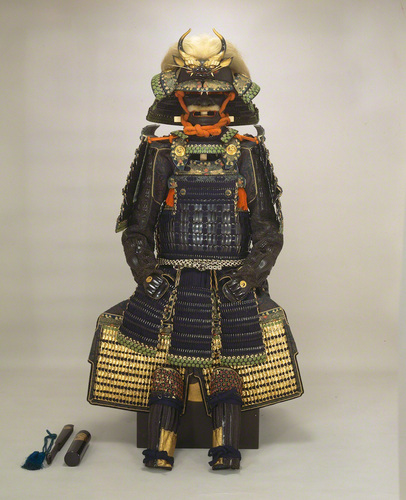
Signed on kabuto helmet: Suifuki Yoshinori; handed down in the Todo Family Suit of Armor in Okegawado Gusoku Style with Todo Crest
Late Edo Period (19th c.)
Iron, leather, silk, lacquer
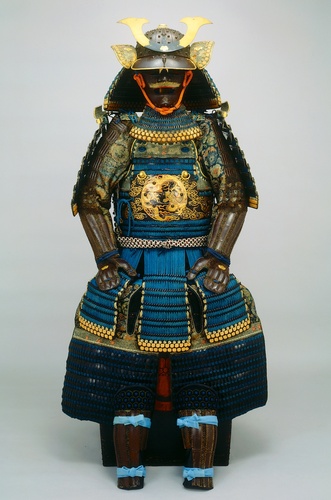
Suit of Armor in Brown and Gold Laced Domaru Style
Mid Edo Period (18th c.)
Iron, leather, silk, lacquer, copper
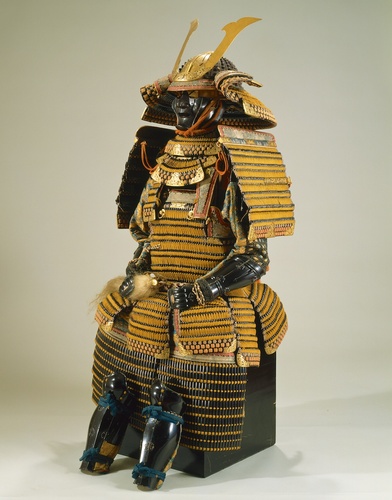
Fancy Helmet with Tokugawa Clan Crest and Design of Butterflies and Dragonflies
Mid Edo Period (18th c.)
Leather, iron, lacquer, maki-e, silk
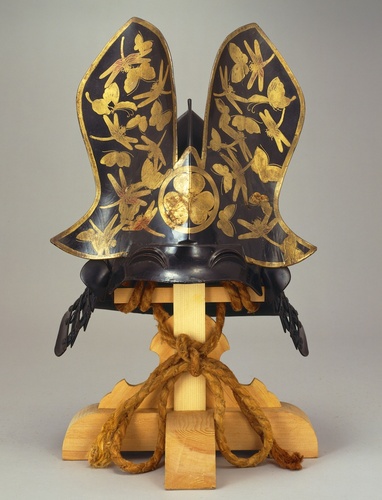
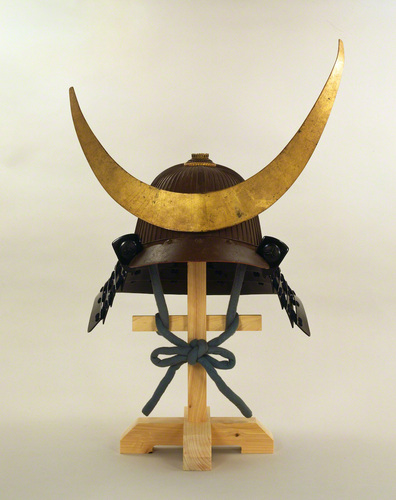
Signed Saotome Iechika Sixty-two Plate Riveted Suji Kabuto Helmet, with Deer Horn Shaped Wakidate
Momoyama-Early Edo Period (16-17th c.)
Iron, silk, wood
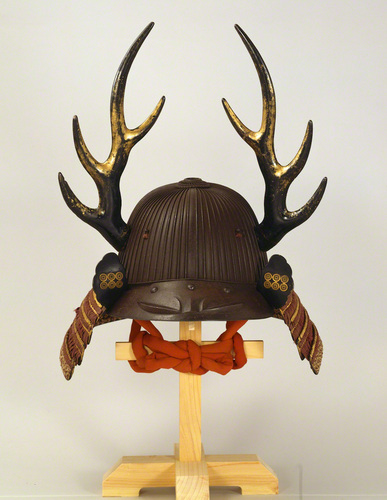
Kabuto Helmet with Visor in the Namban Style
Early Edo Period (17th c.)
Iron, silk, copper
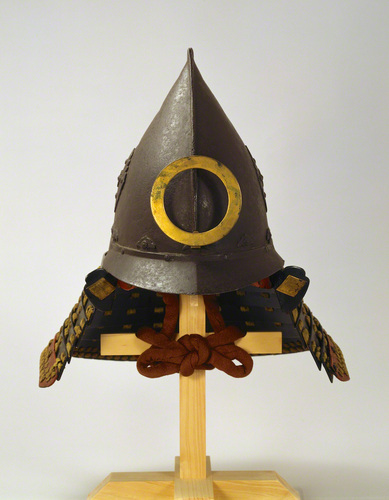
Harikake Kabuto Helmet with Chinese-style Headdress
Mid Edo Period (18th c.)
Iron, papier-mache, lacquer, silk, wooden board
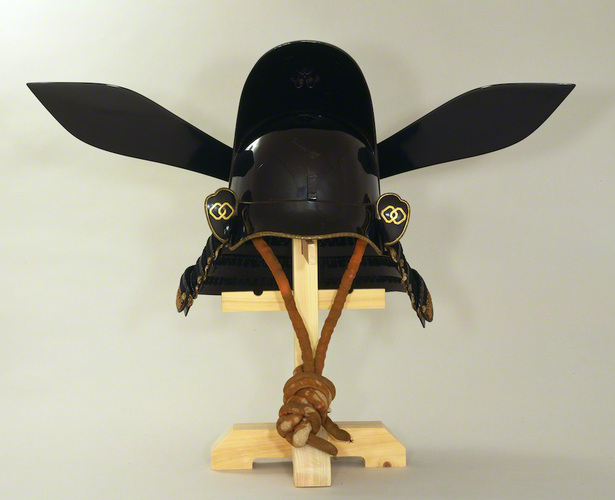
Face Guard (So-menpo)
Mid Edo Period (18th c.)
Hardened leather, iron, lacquer, silk
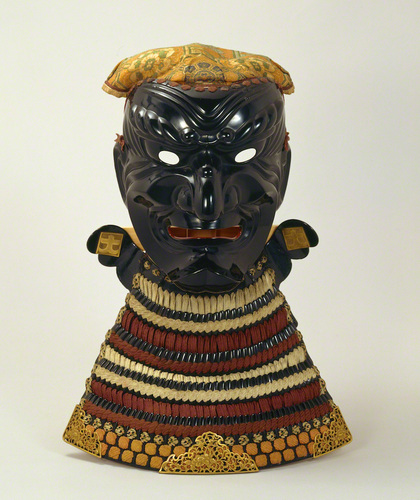
Face Guard (Shirohige Ressei-menpo)
Mid Edo Period (18th c.)
Iron, lacquer, leather, silk, copper
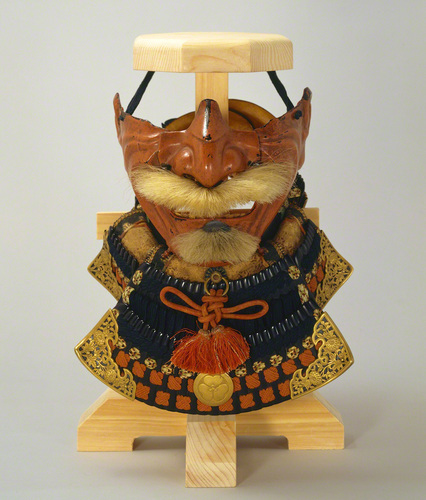
Signed Gashu-ju Masahira Saku Stirrups with Design of Butterfly and Chinese Flowers
Mid Edo Period (18th c.)
Iron with maki-e and silver inlay
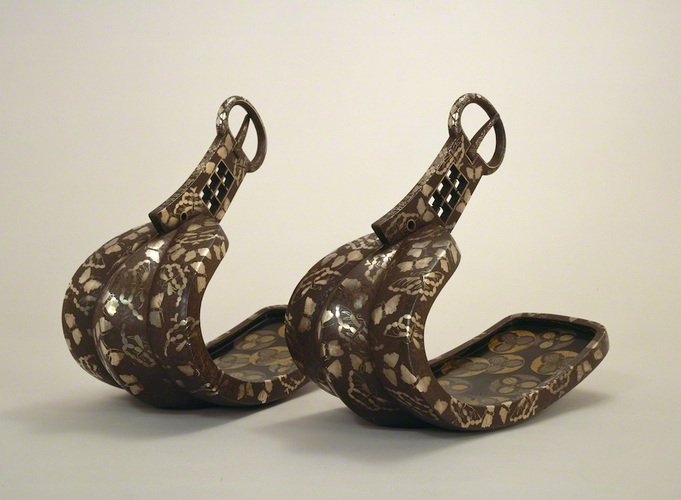
Matchlock Gun: Unsigned
Mid-Edo Period (18th C.)
Iron
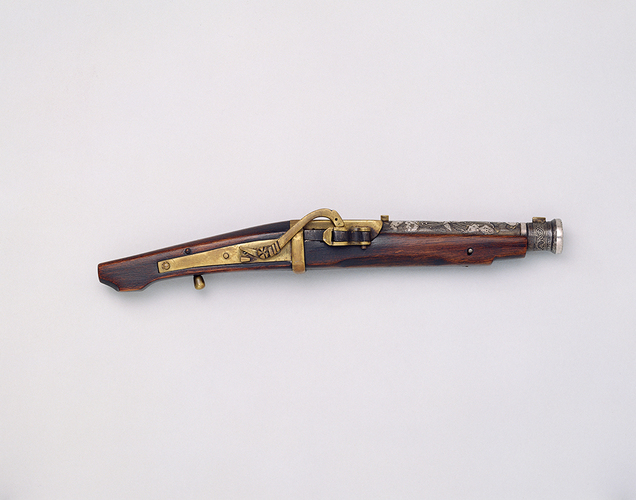
Commander’s Folding Fan Lacquered in Black
Late Edo Period (19th c.)
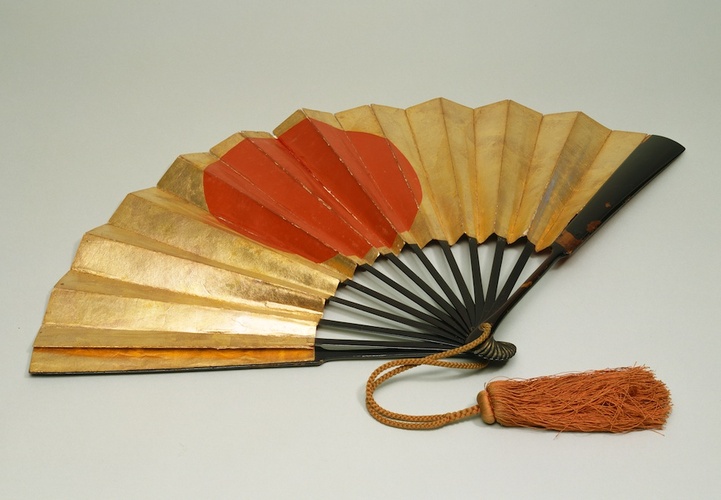
Signed Myochin Munenori Twenty-four Ken Jingasa Hat
Mid Edo Period (18th c.)
Iron
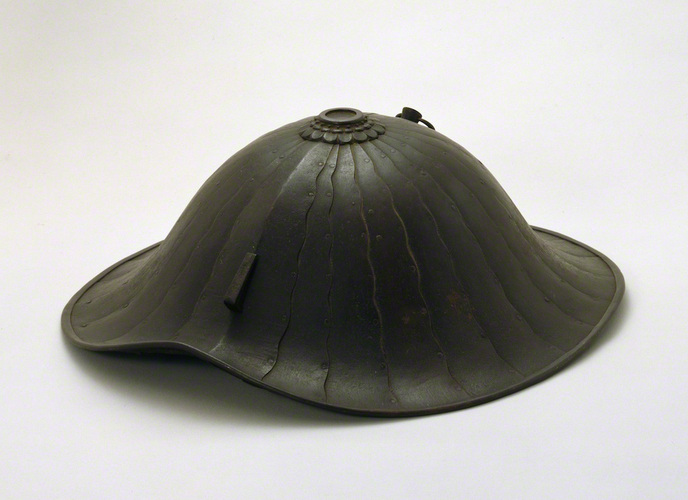
(Presumably) handed down in the Nabeshima family Jin-baori, Battle Surcoat (with the motifs of dragons and clouds, and the crests of the Nabeshima clan)
Mid Edo Period (18th c.)
Silk
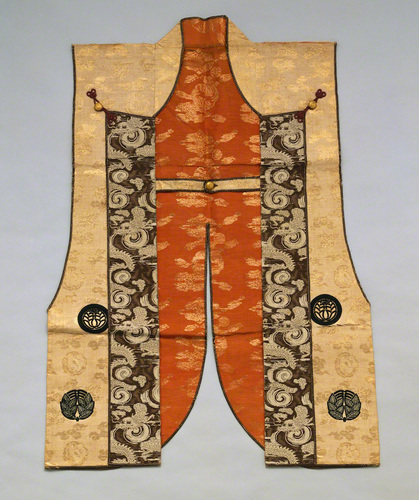
Attributed to Sukezane Tachi: Unsigned
Tachi: Bizen Province, Mid-Kamakura Period (13th C.) / Fittings: Early Edo Period (17th C.)
Iron, forged

Attributed to Taima Katana: Unsigned
Yamato Province, Late Kamakura Period (14th C.)
Iron, forged

Attributed to Yukimitsu Tanto: Unsigned
Sagami Province, End of Kamakura Period (14th C.)
Iron, forged
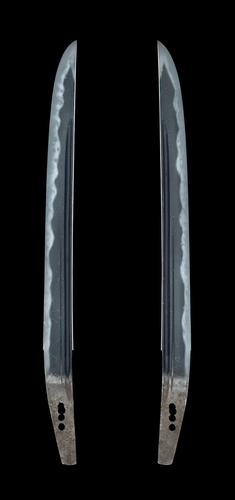
[Tsuba, Fuchigashira, Menuki] Ishiguro Masayoshi [Kozuka, Kogai] Yanagawa Naomasa Black Waxed Scabbards with Sword Fittings [Tsuba, Fuchigashira, Menuki] Signed Ishiguro Masayoshi Saku [Kozuka, Kogai] Signed Yanagawa Naomasa Saku
Late Edo Period (19th C.)

Katsushika Hokusai Fifty-three Stations on the Tokaido: Illustrated Book of Ekiro-no-Suzu
c. 1810
Color woodblock print on paper, book illustrations

